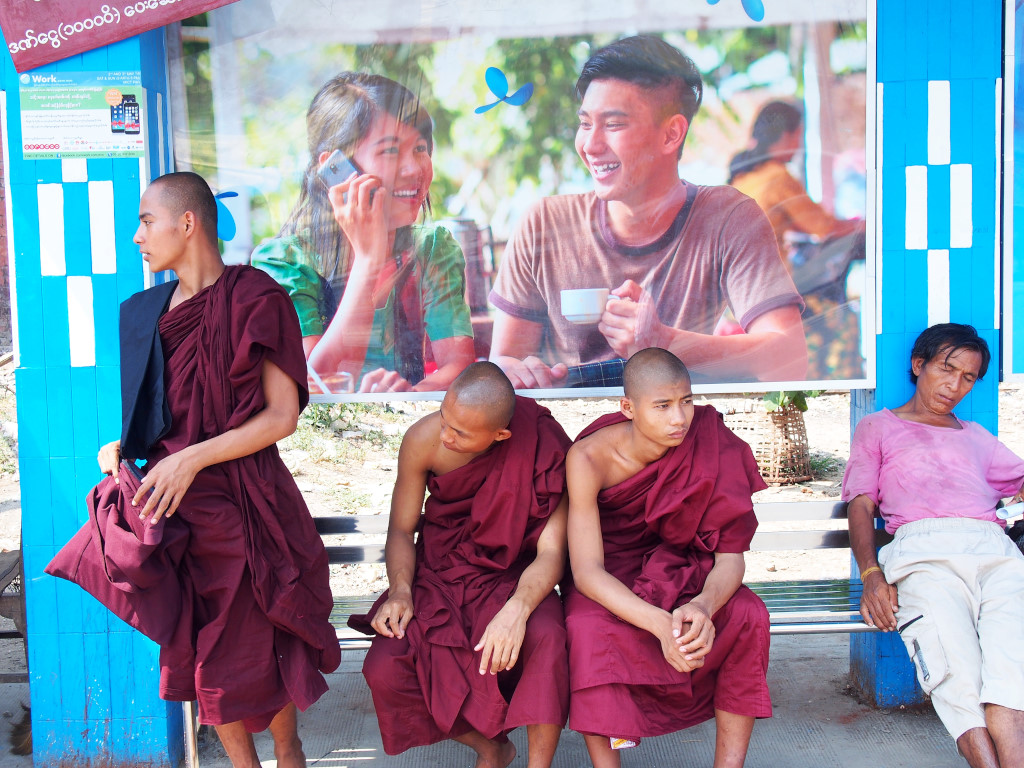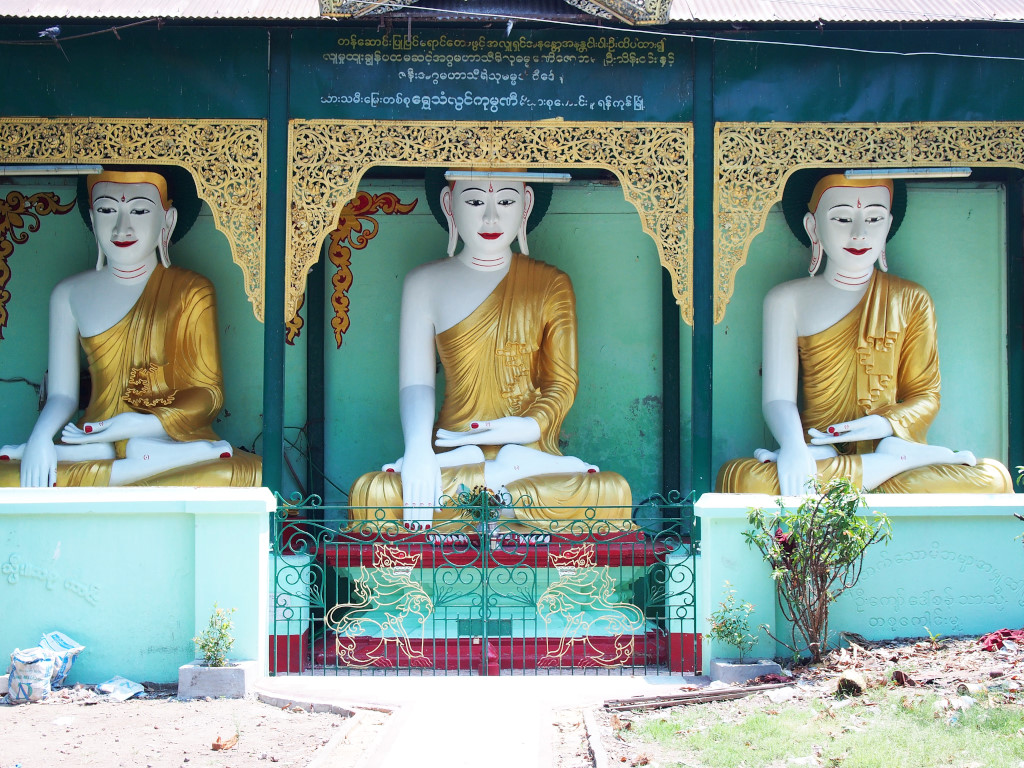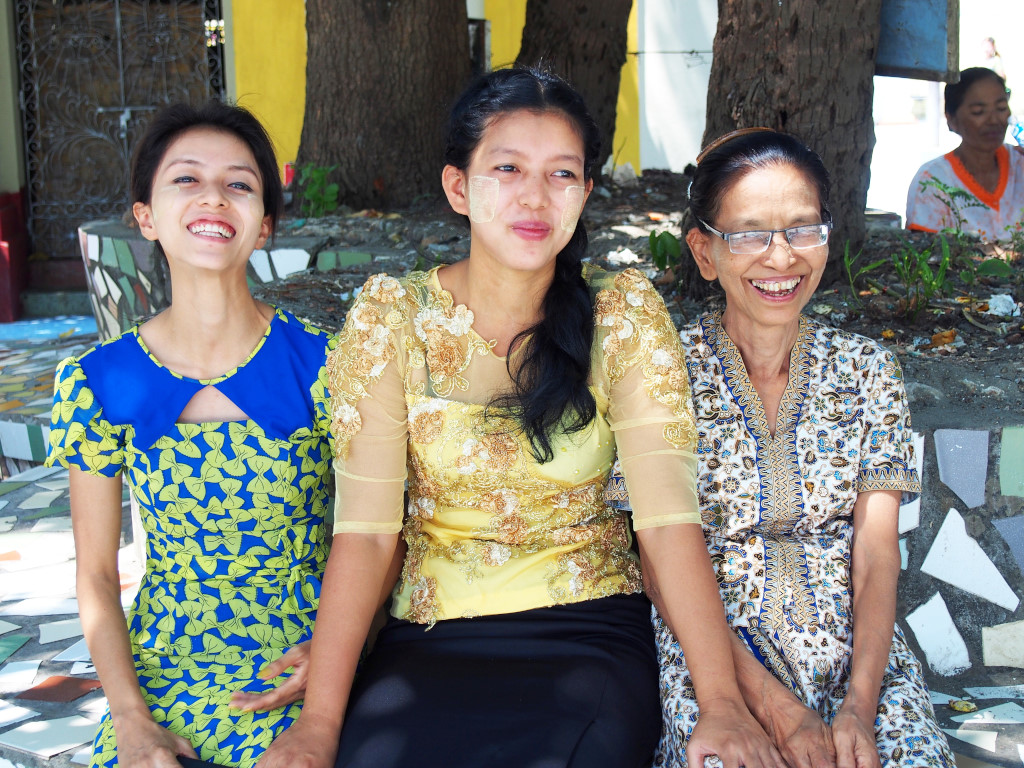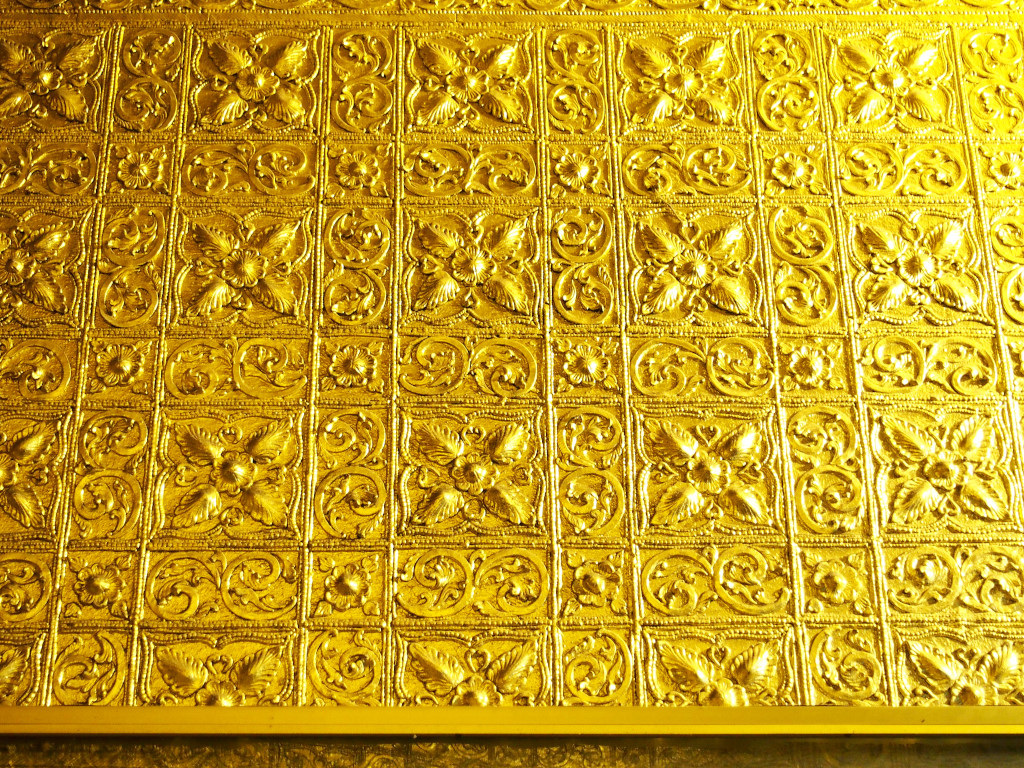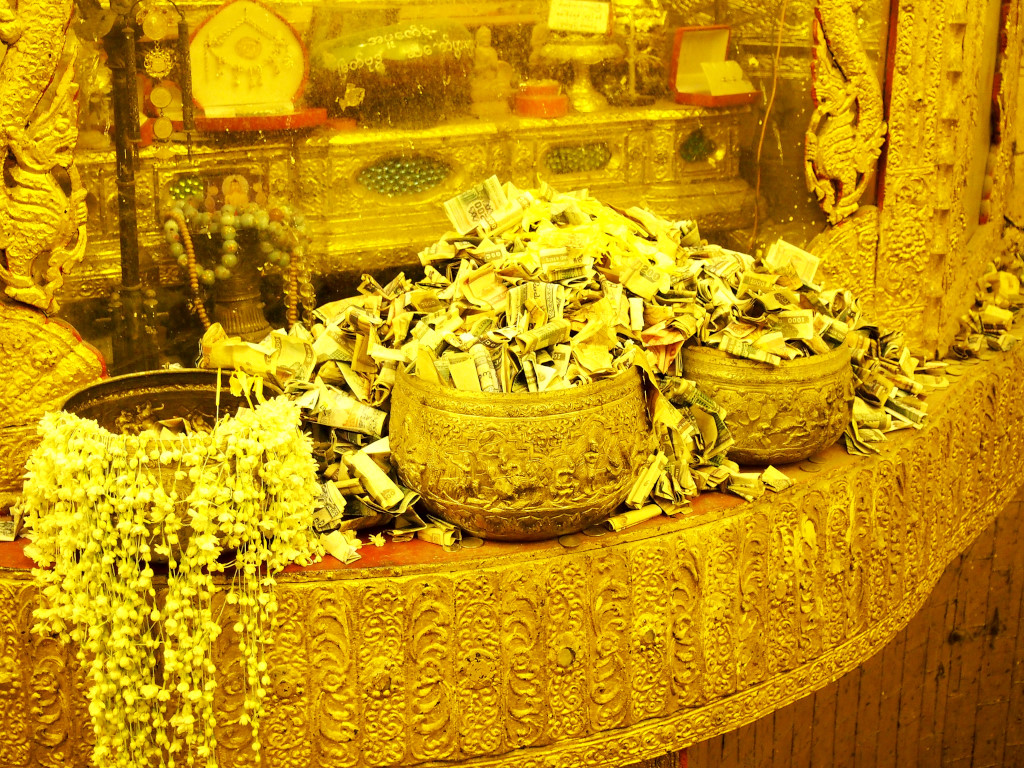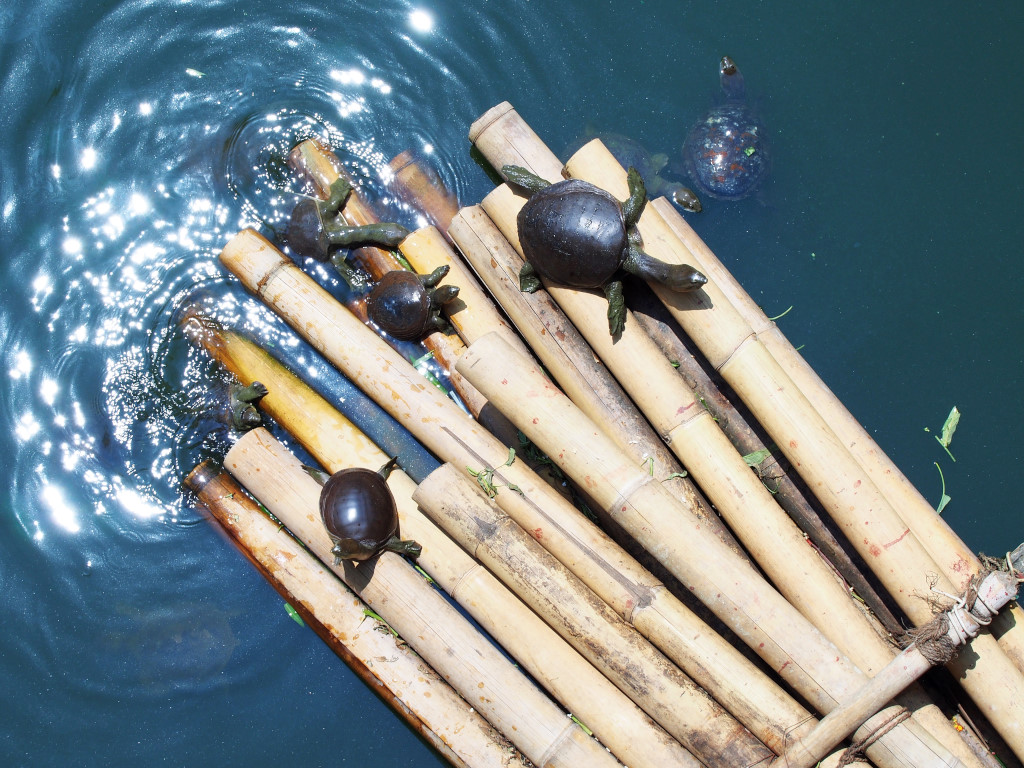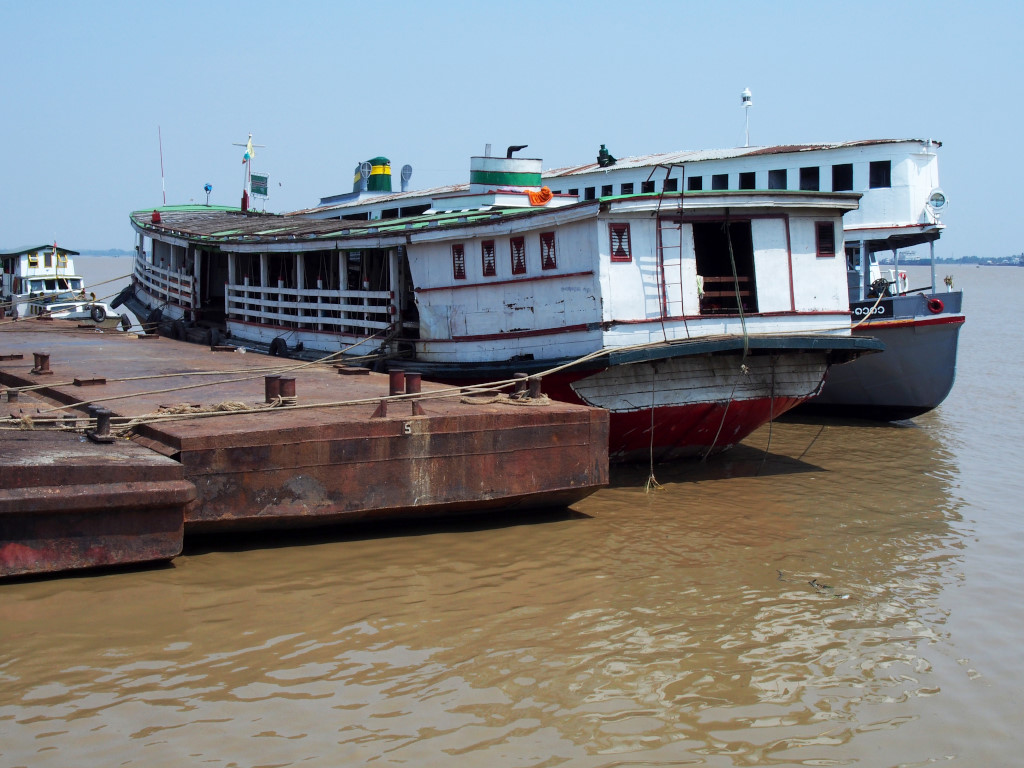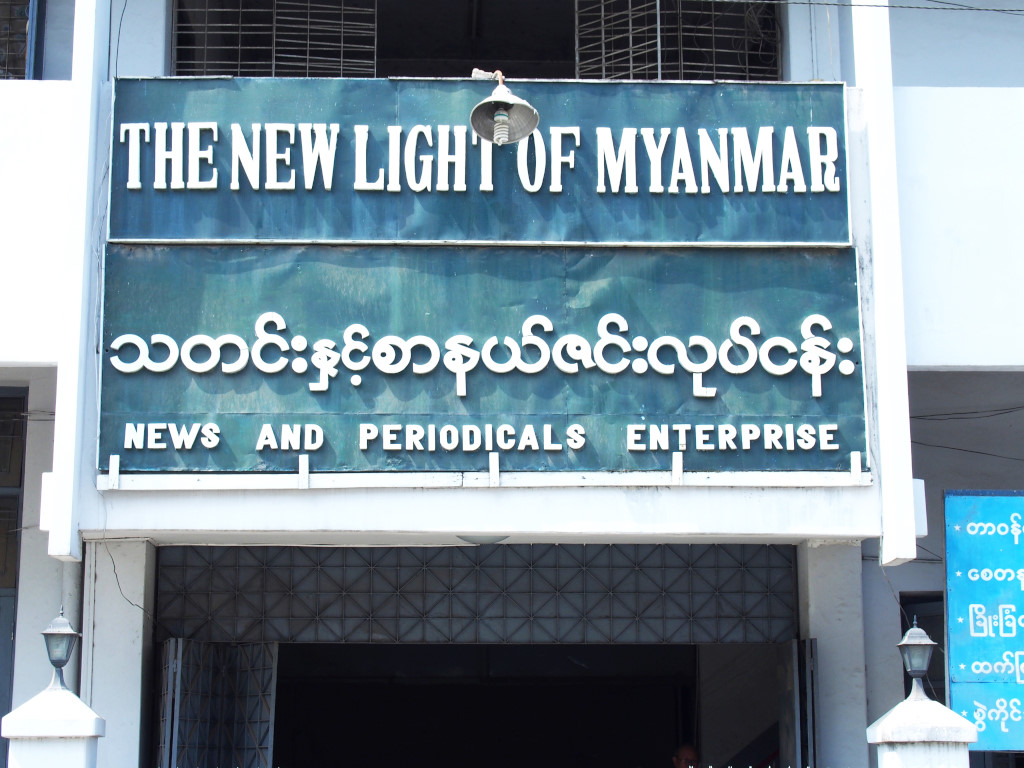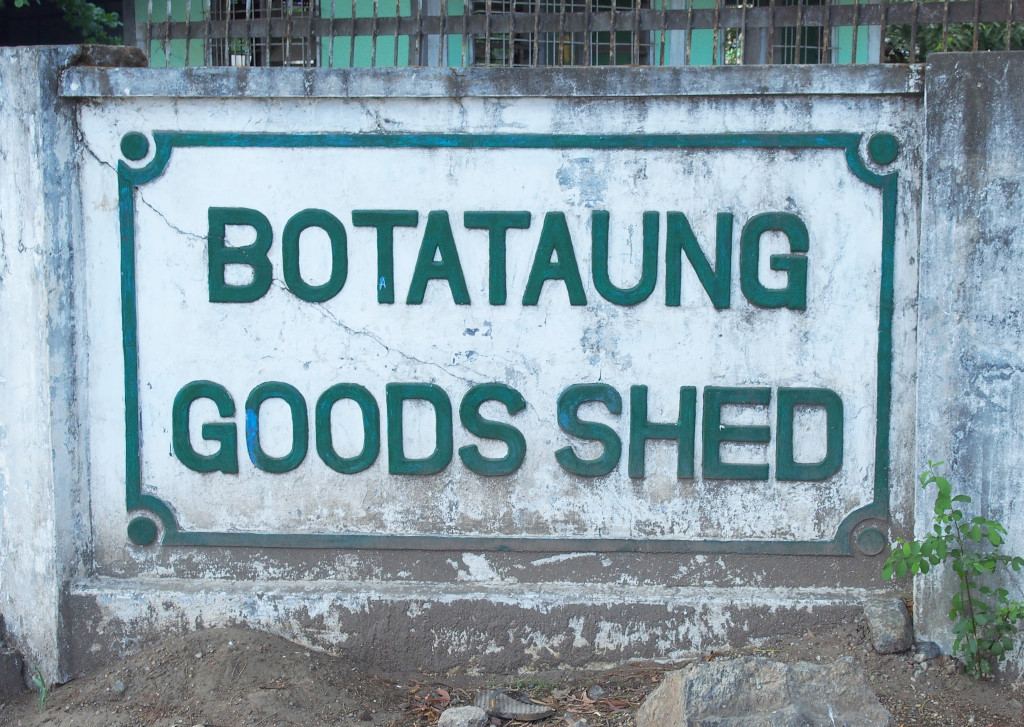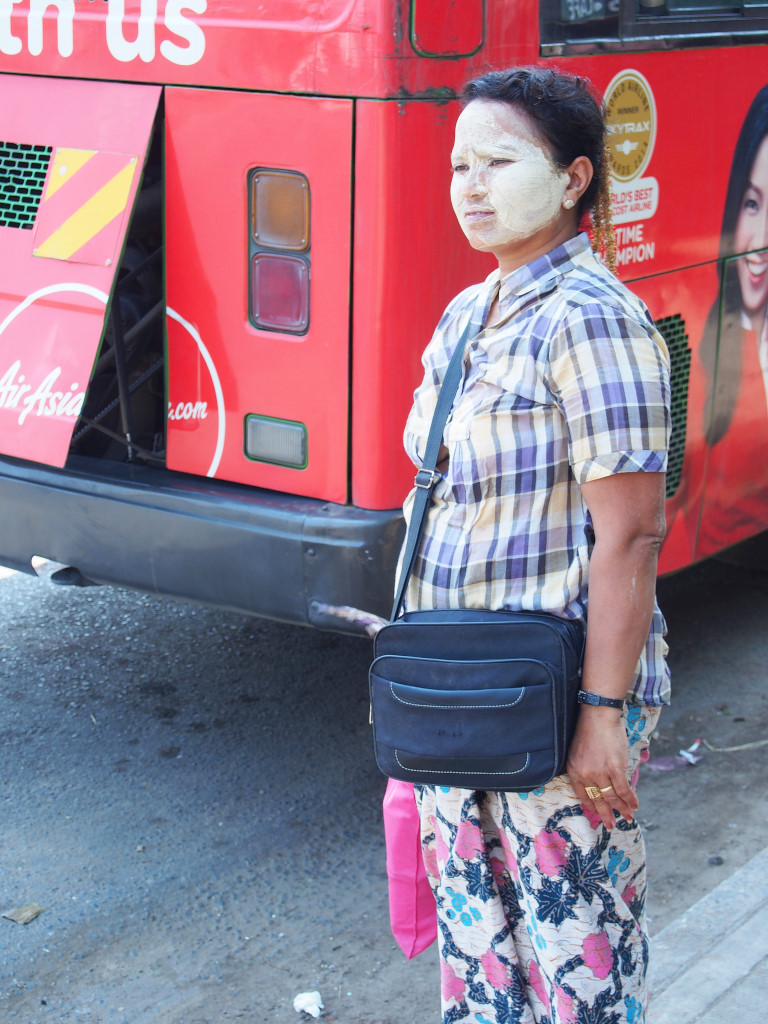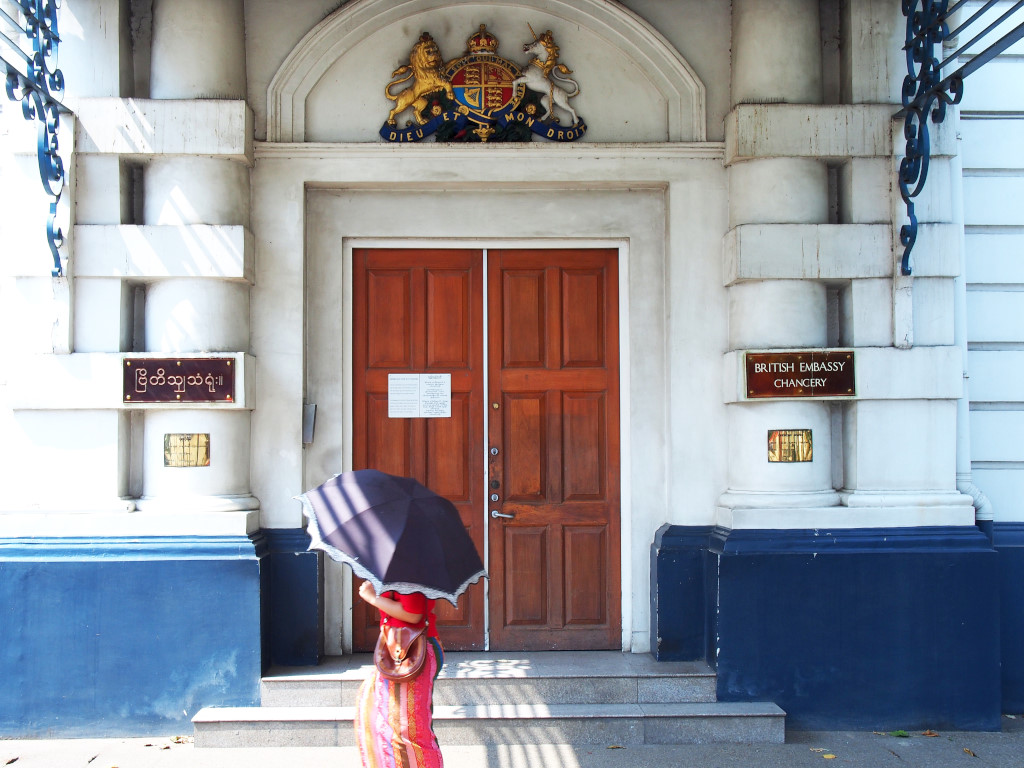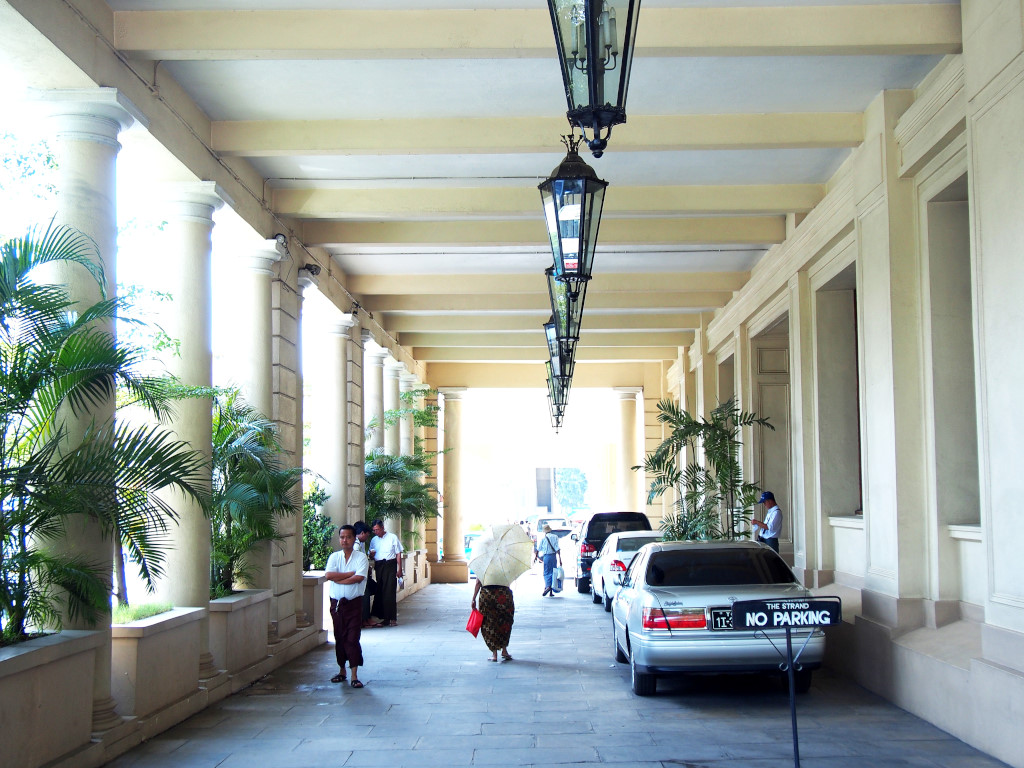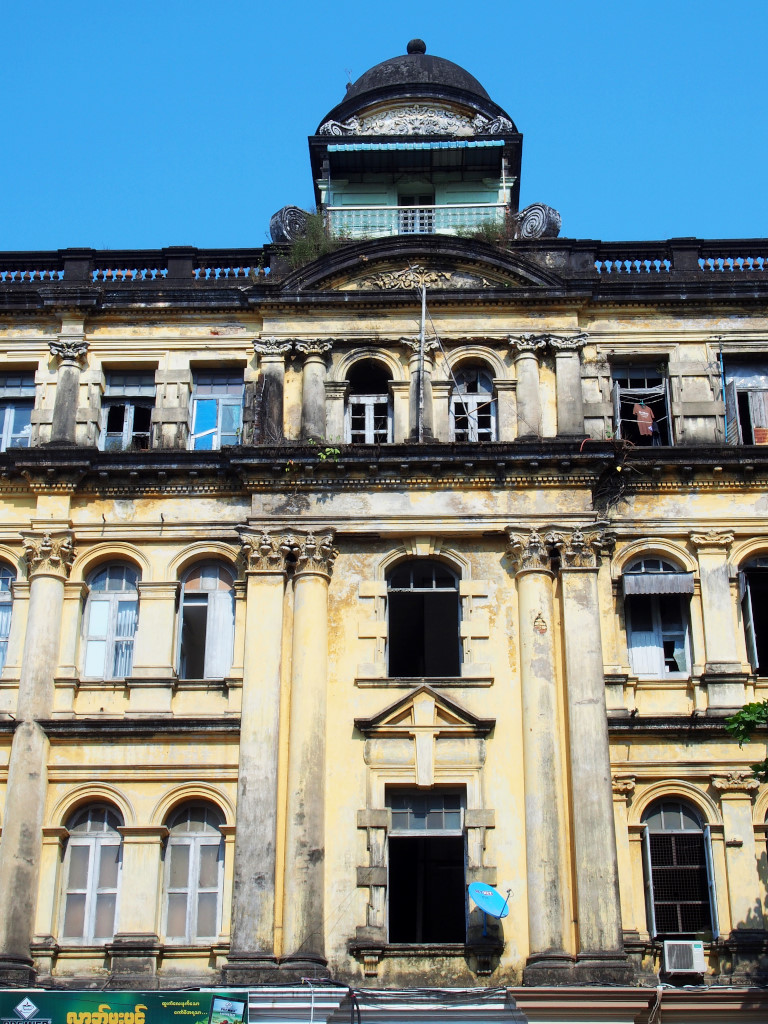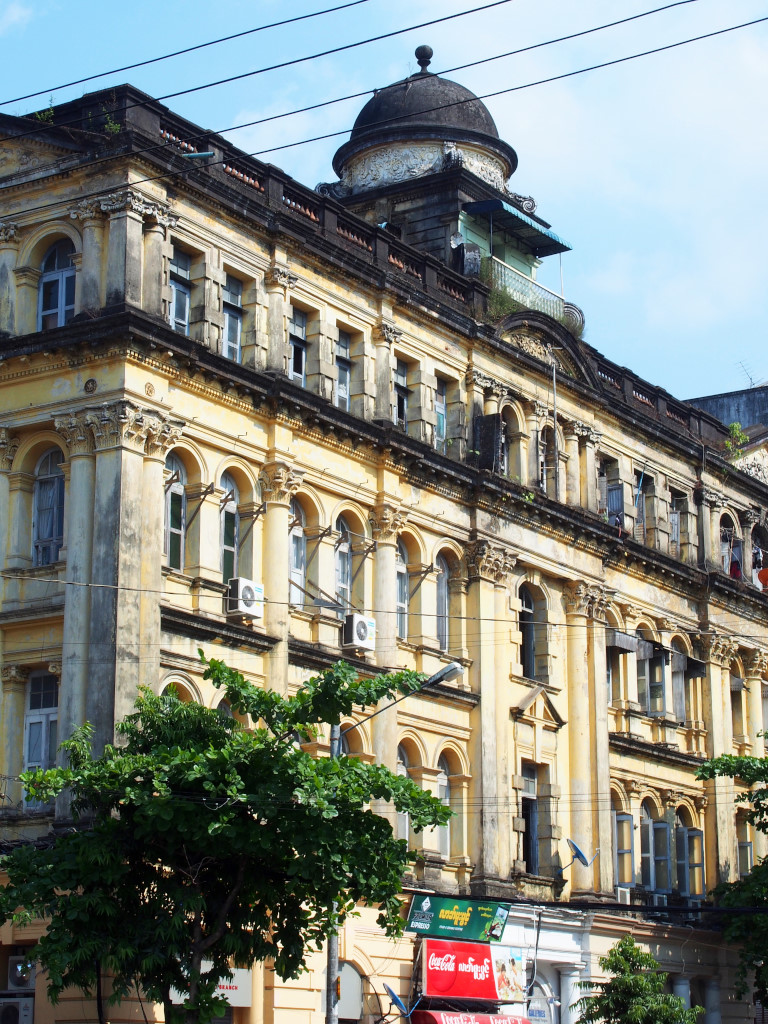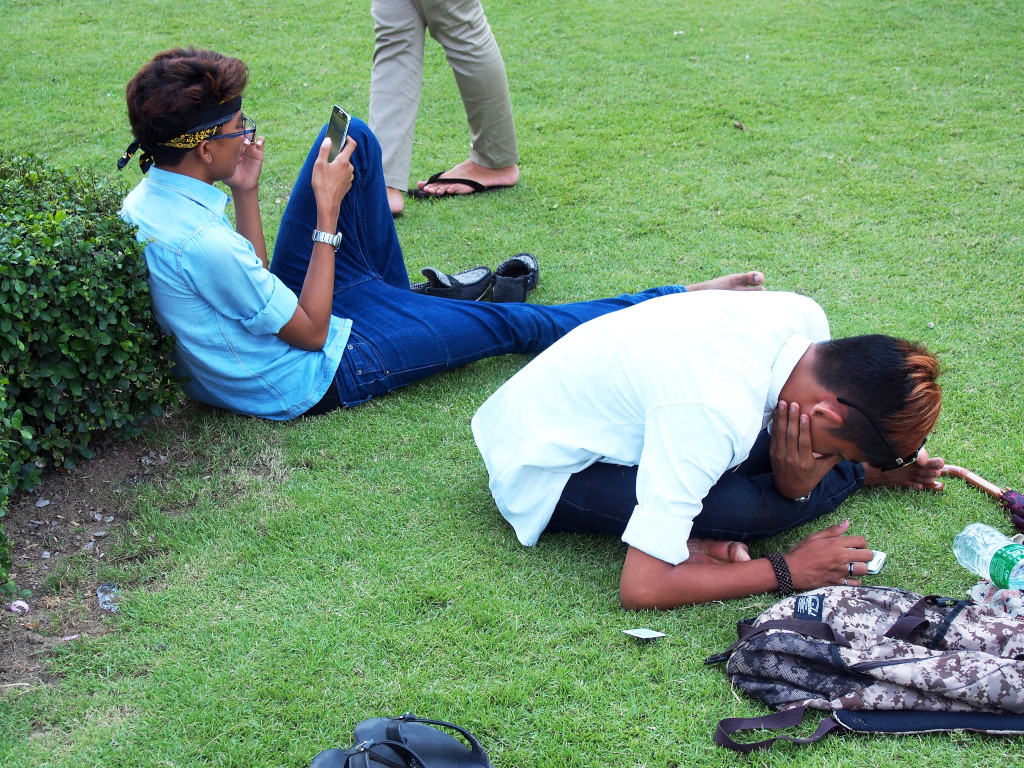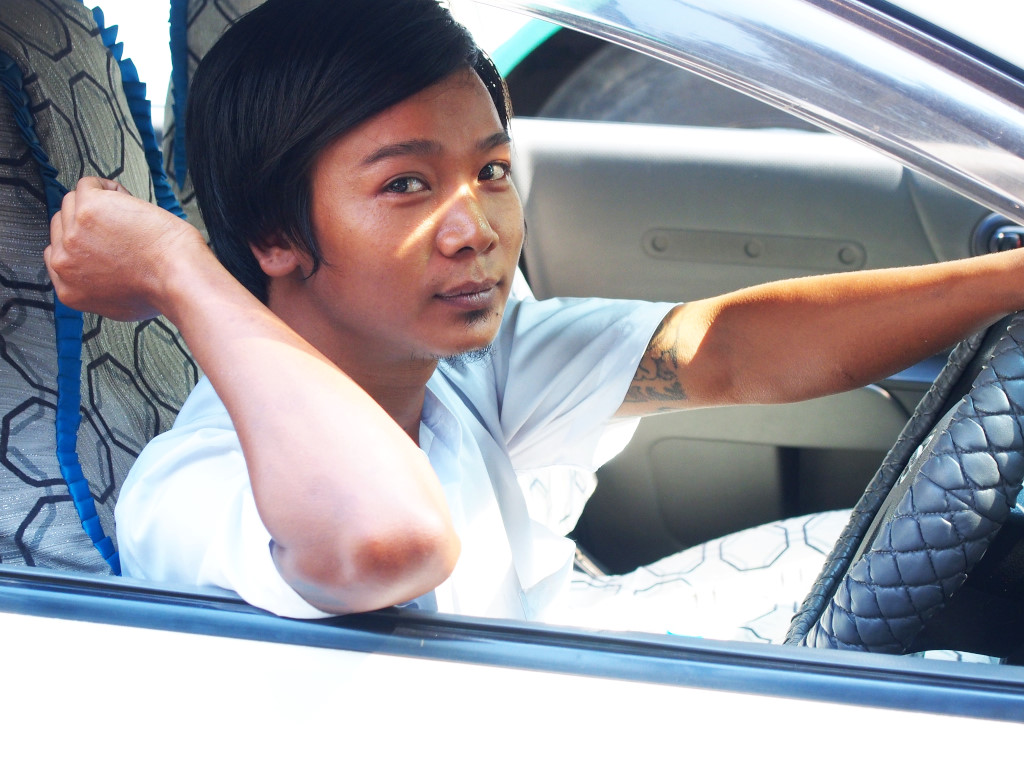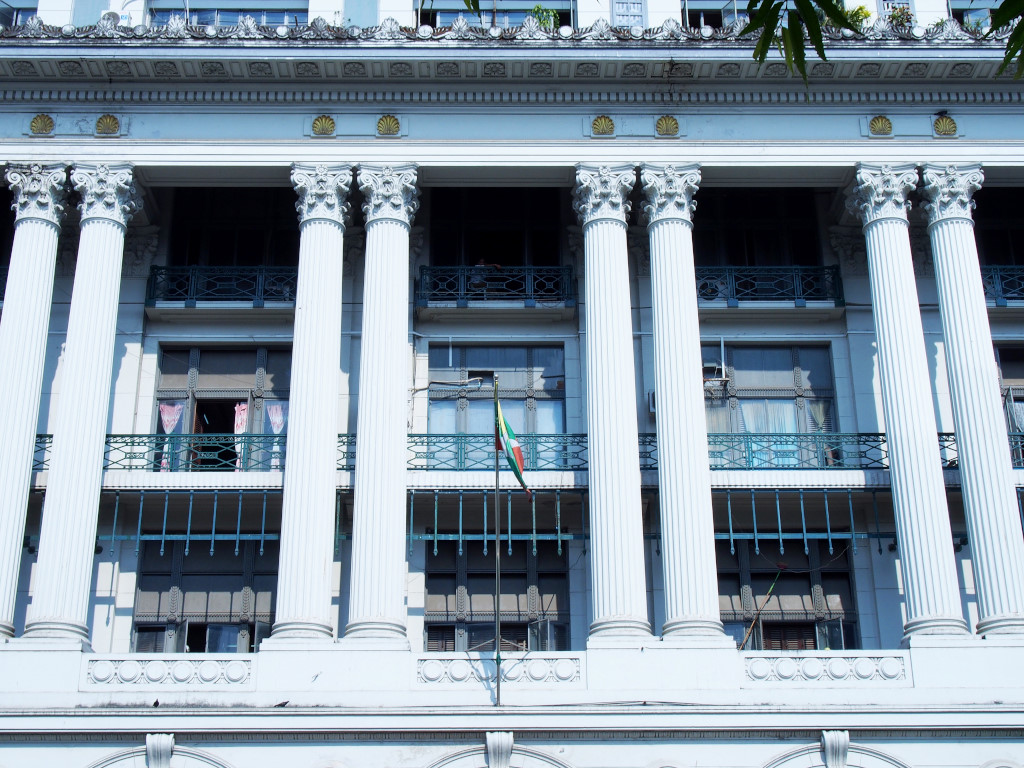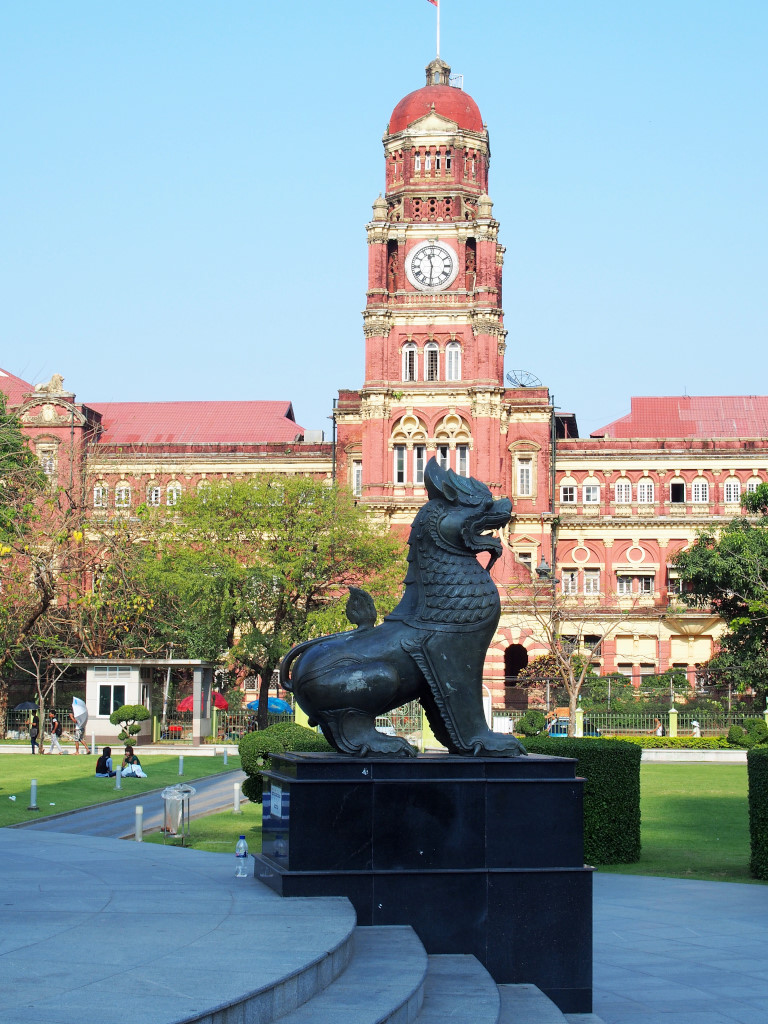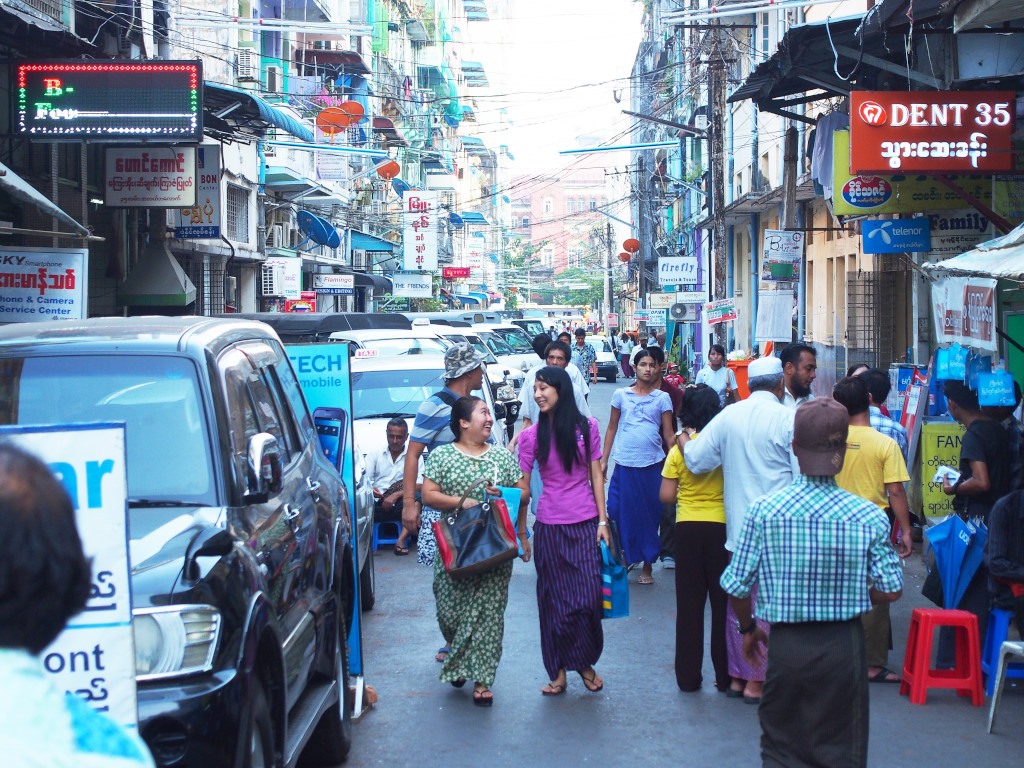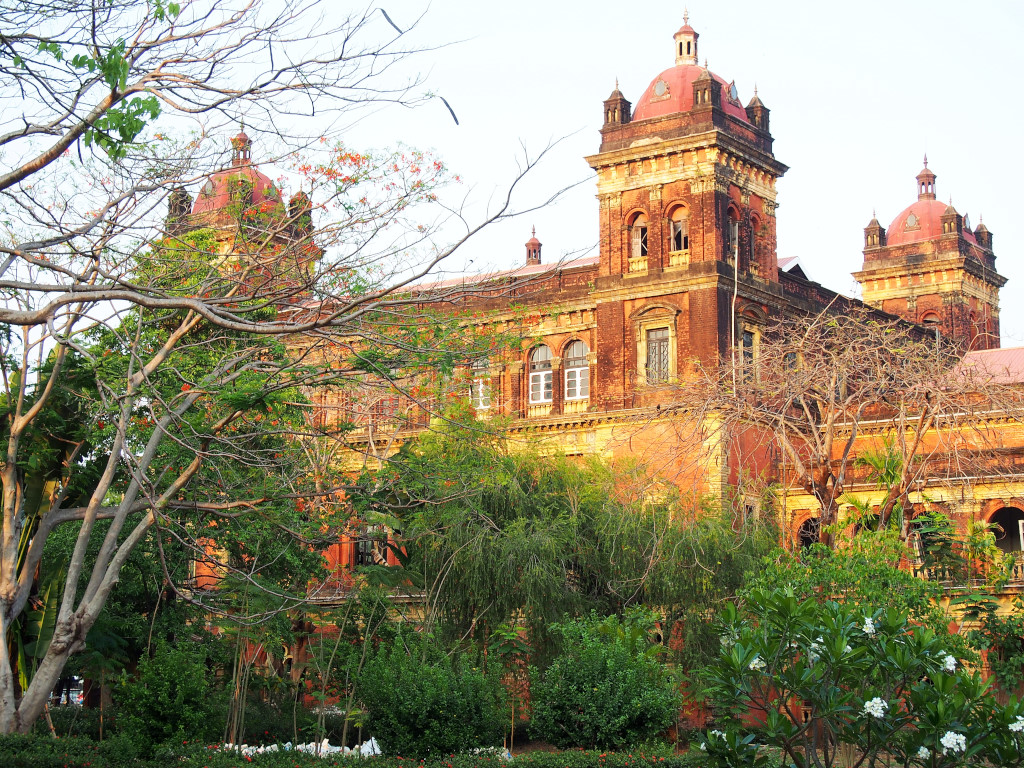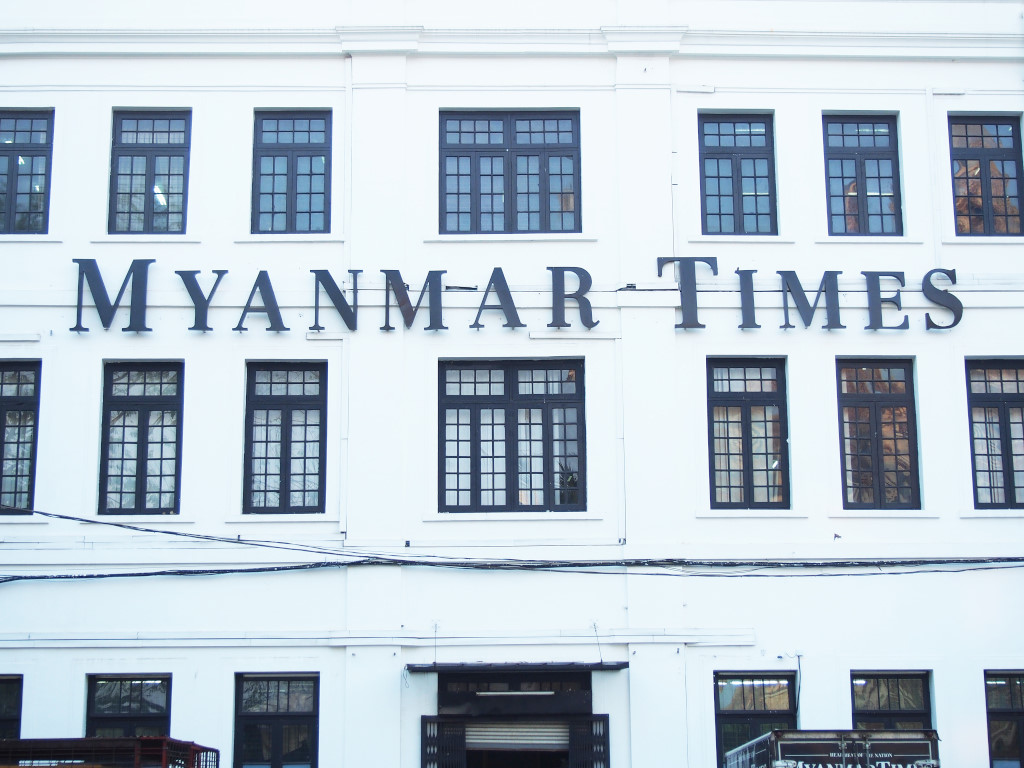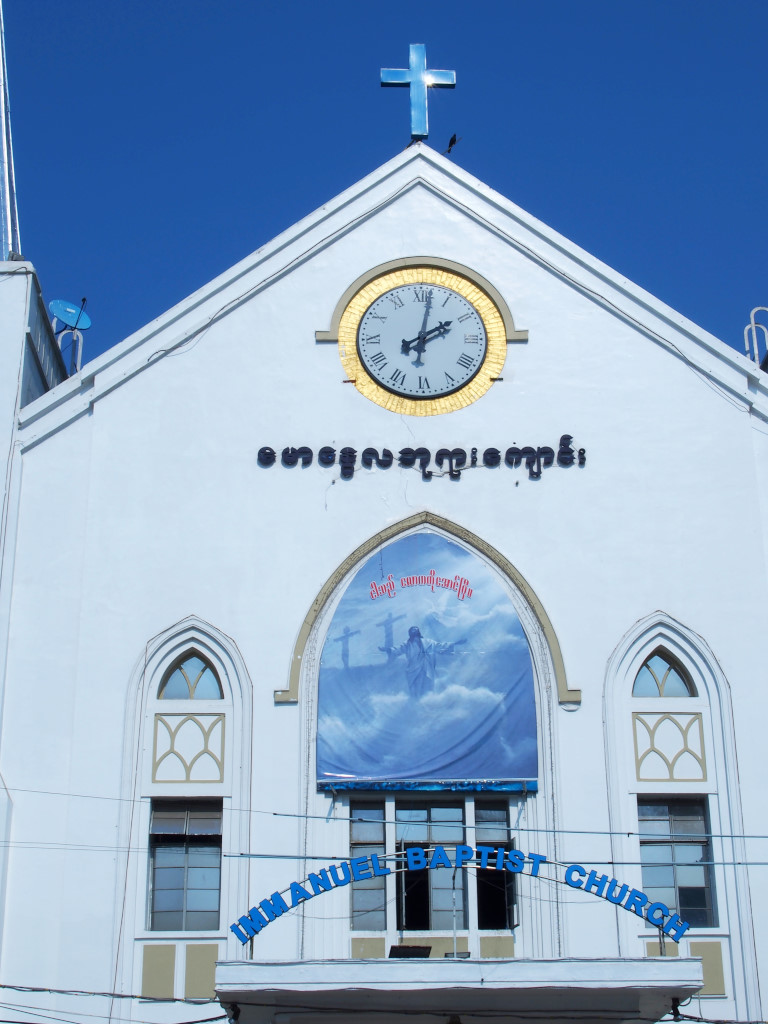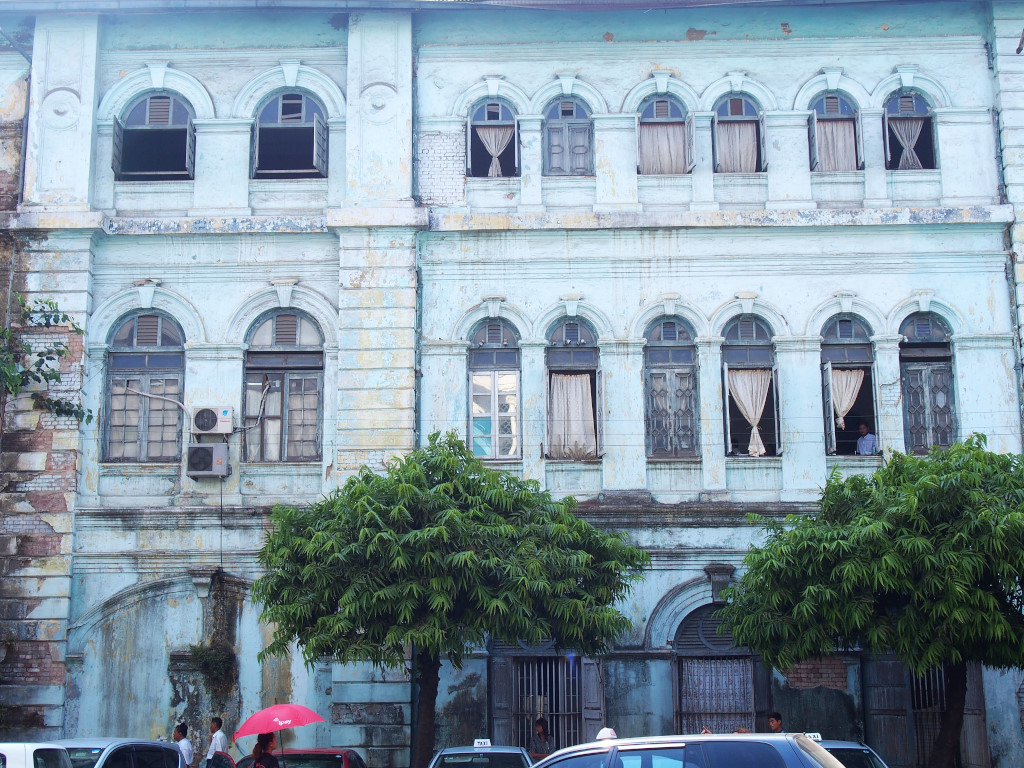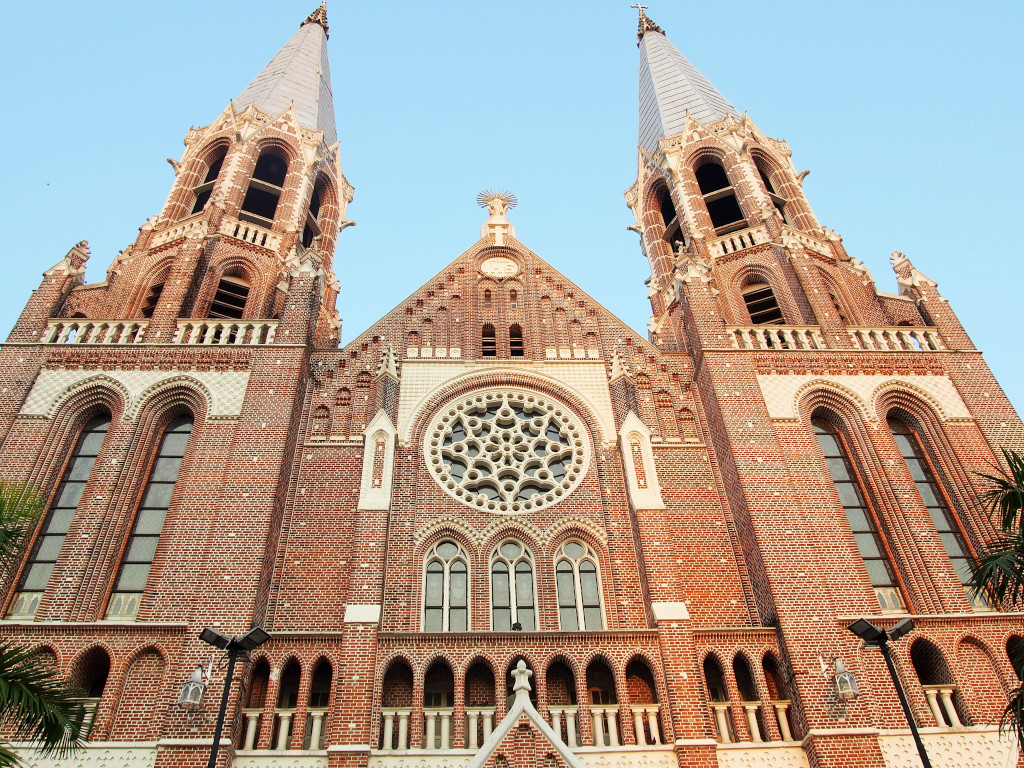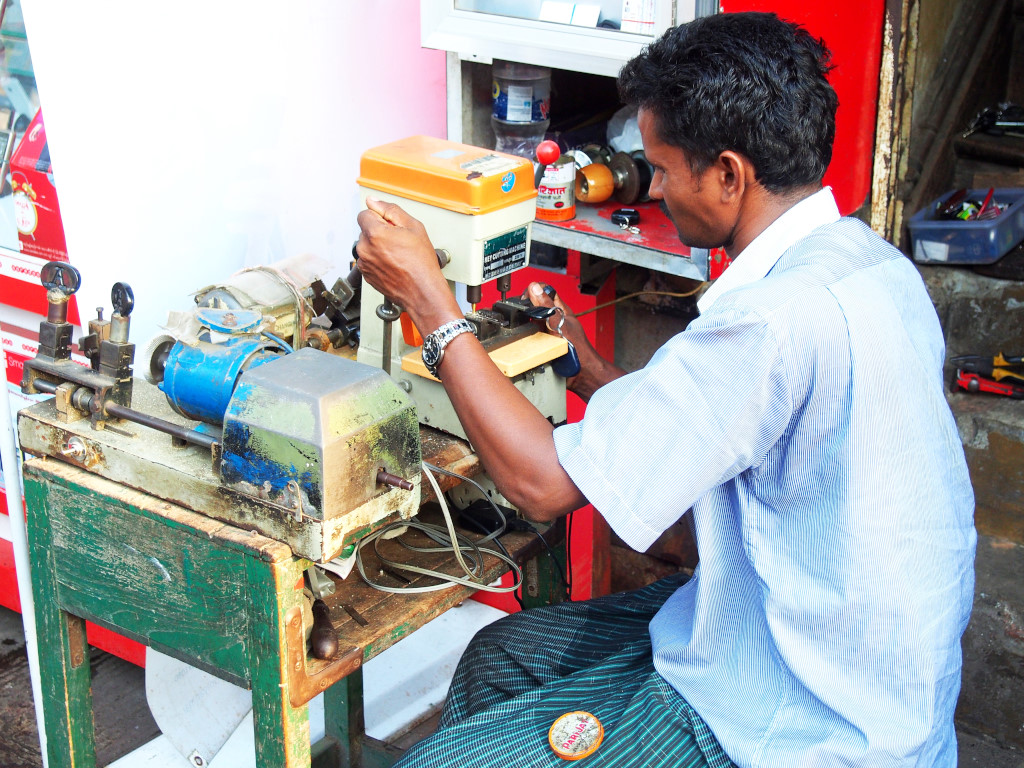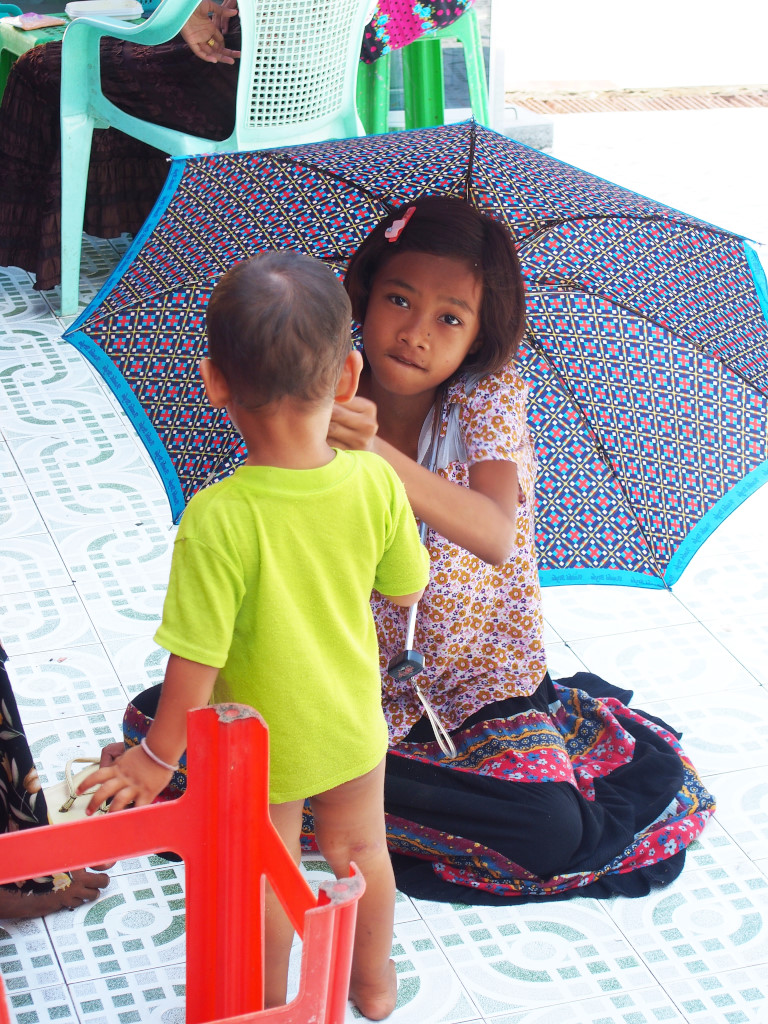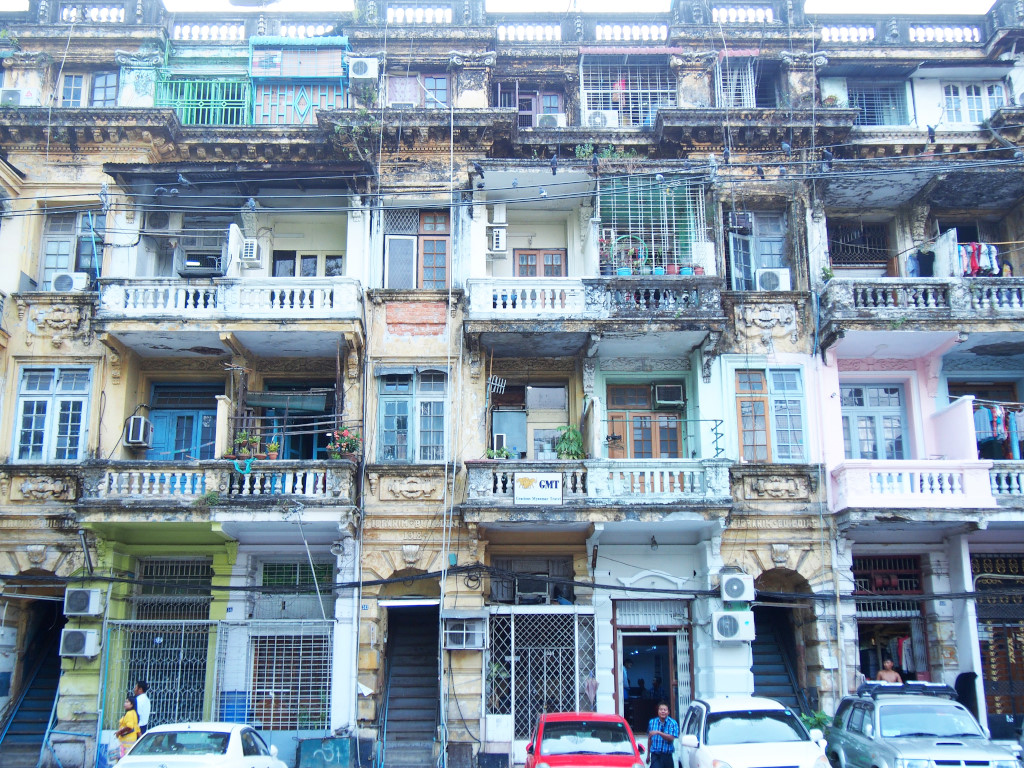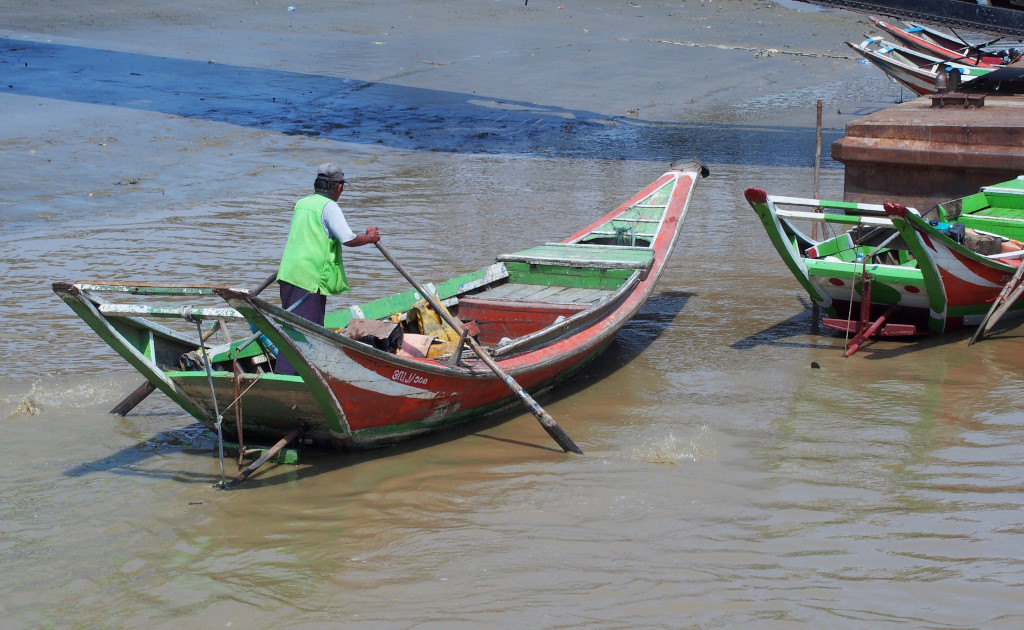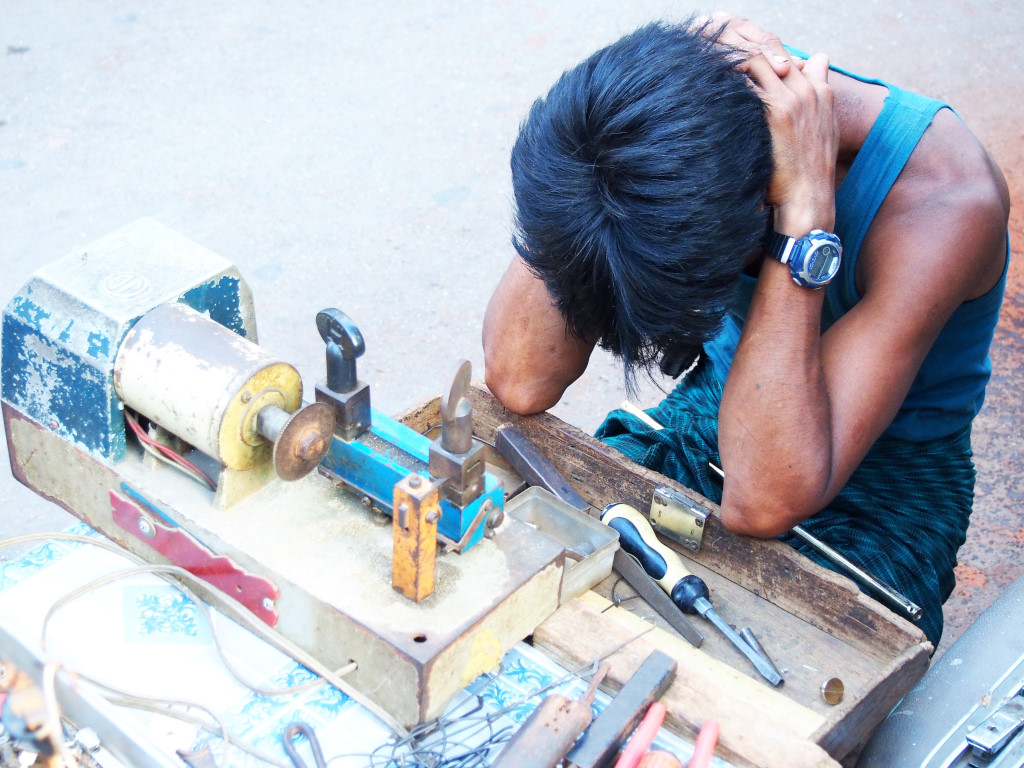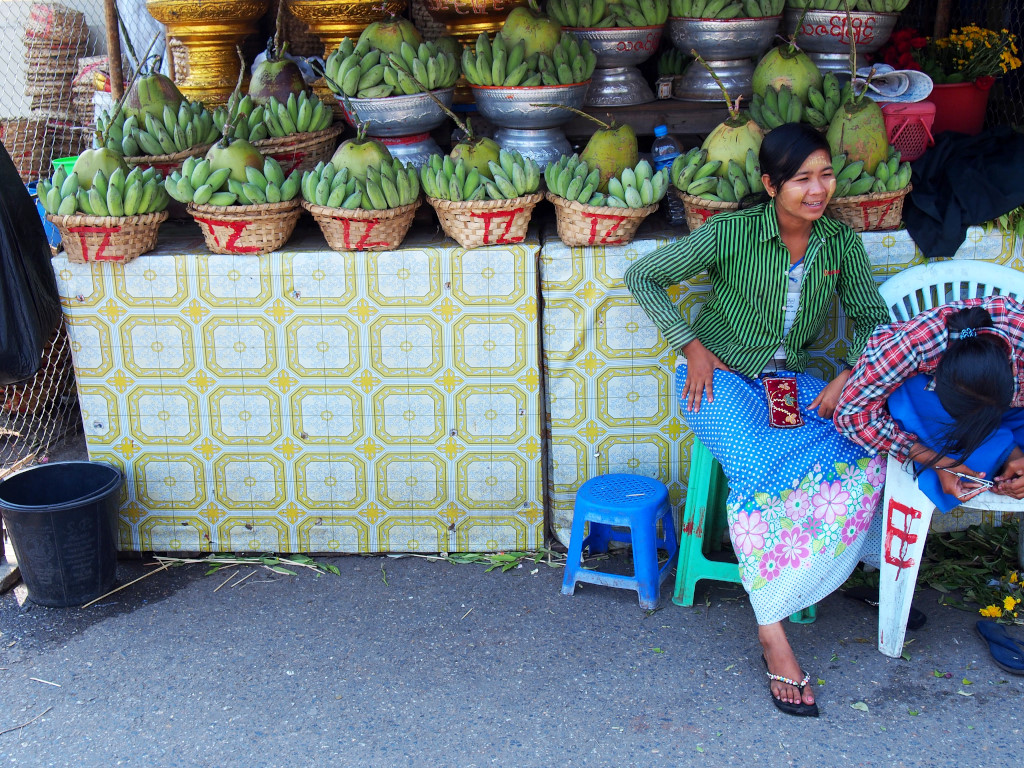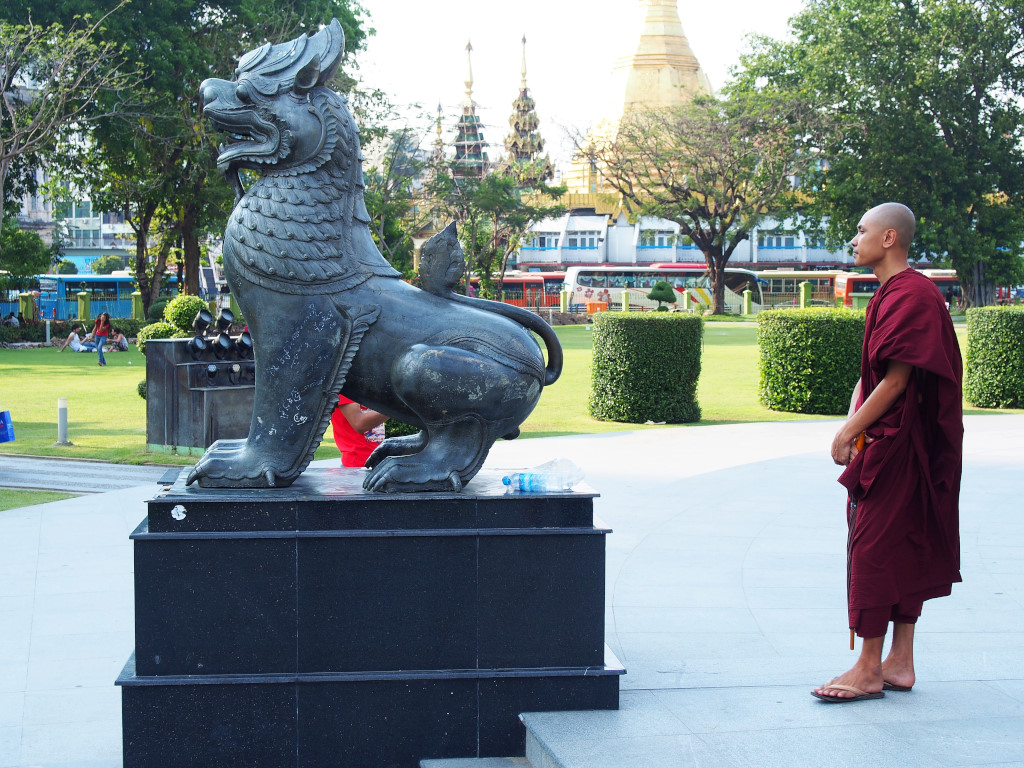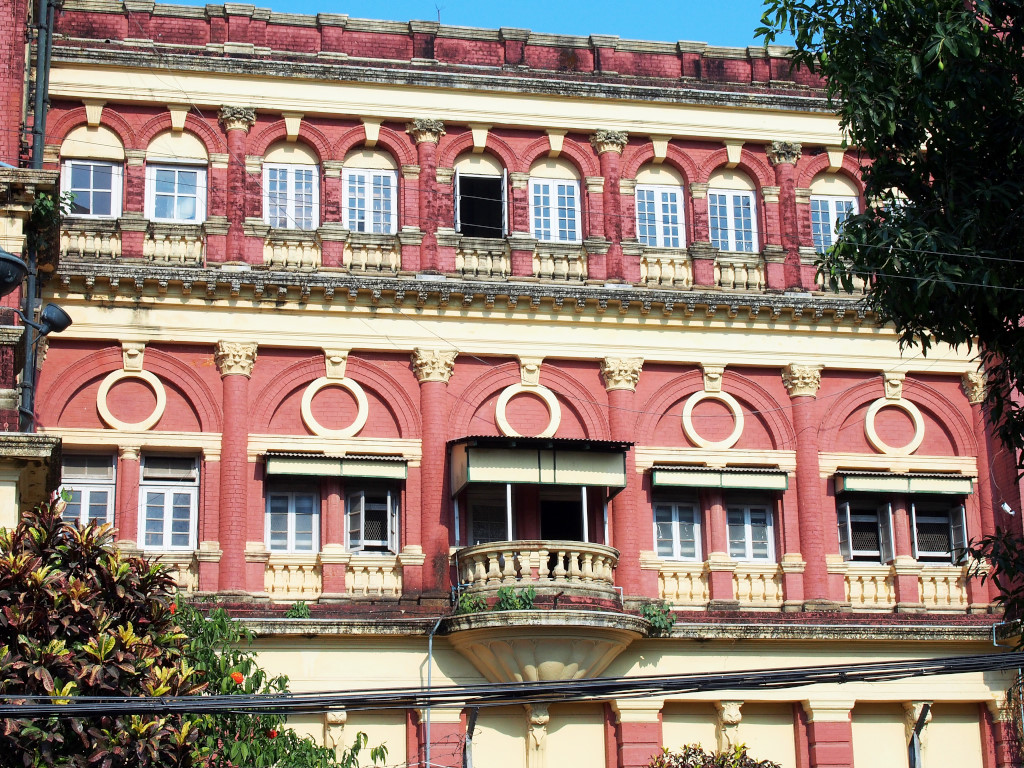April 6th, 2015
The morning chanting continues. I sense that the stomach parasite I had picked up a few days ago is on its way out the door, as my stomach seems to be stabilizing. The rooftop terrace offers the usual sun-drenched views of the city’s port, the far banks of the river surprisingly bereft of life.

Today’s itinerary involves seeing the attractions in the city centre, and perhaps Kan Daw Gyi Lake if time – and energy – suffices, given the actualities of the blistering heat. Our bus rambles down Strand Road towards the centre, the road further into town utterly clogged with traffic, the gentle breeze that some speed offers dissipating and the heat becoming unbearable.
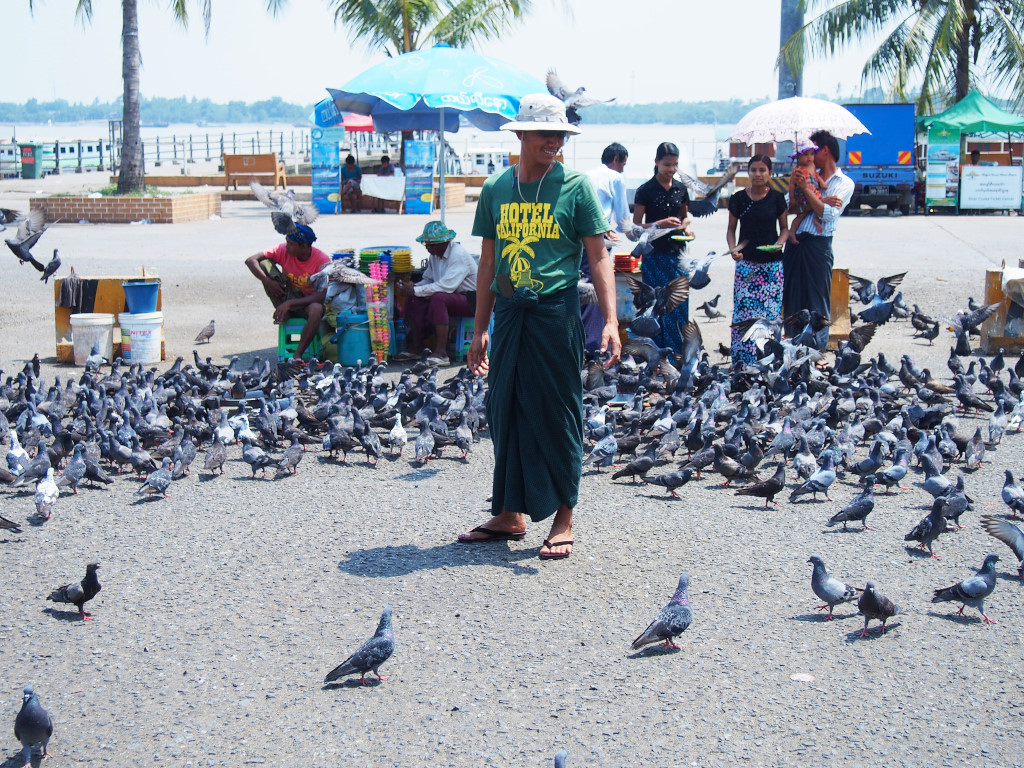
One of the most ancient temples in the country, Botahtaung Paya was apparently originally built several thousand years ago when soldiers consecrated the pagoda with six hairs of Buddha they had brought from India. While these hairs were soon relegated to other temples, Botahtaung remained through the years, having experienced significant destruction, specifically during WWII, when the zedi was reconstructed to contain a zigzag-style maze whose walls are adorned with continuous symmetrical floral patterns plated in gold, the relics displayed behind barred glass cages as much as the object of the local pilgrims’ fascination as are the foreign visitors.
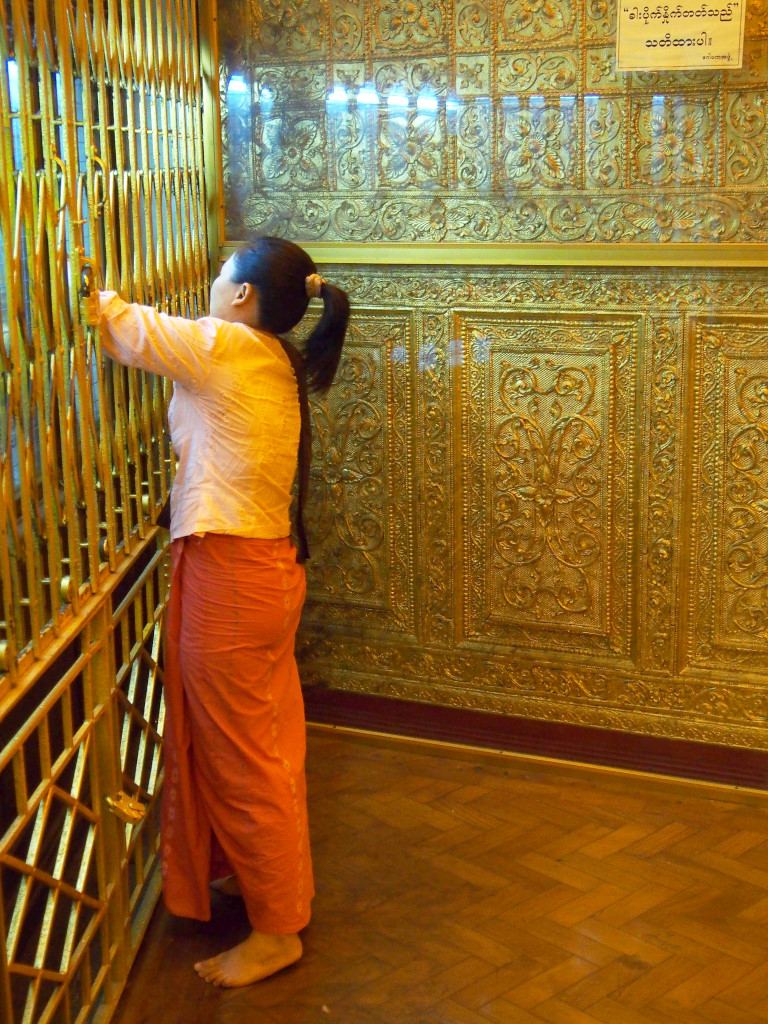
Beyond the glass cages housing cast bronze statues of Buddha of various sizes, the ultimate destination of visitors is the tiny central shine hidden between a glass sheet, holding the sacred hairs of Buddha, which some visitors pray to, others simply taking copious amounts of photos with their cell phones.
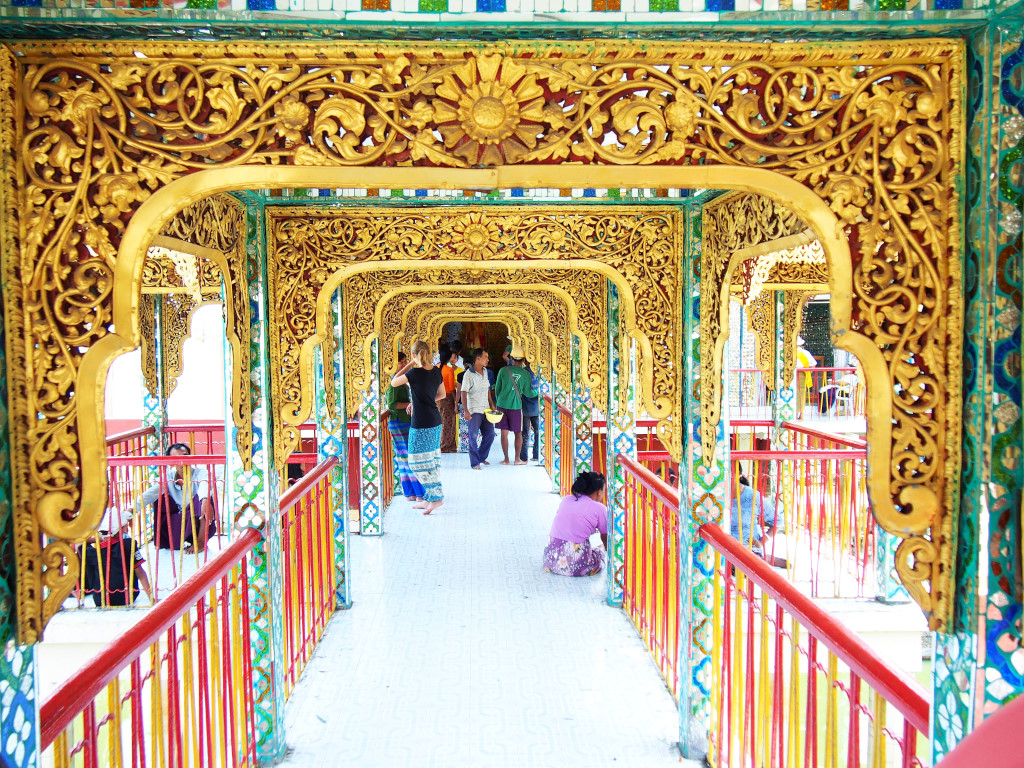
Devotees are prostrated before golden statues of Buddha in the neighboring pavilions, although an unexpected claim to fame of the temple is the turtle pond, the occasional creature swimming to the surface to struggle onto the bamboo rafts drifting on the dirty pond.
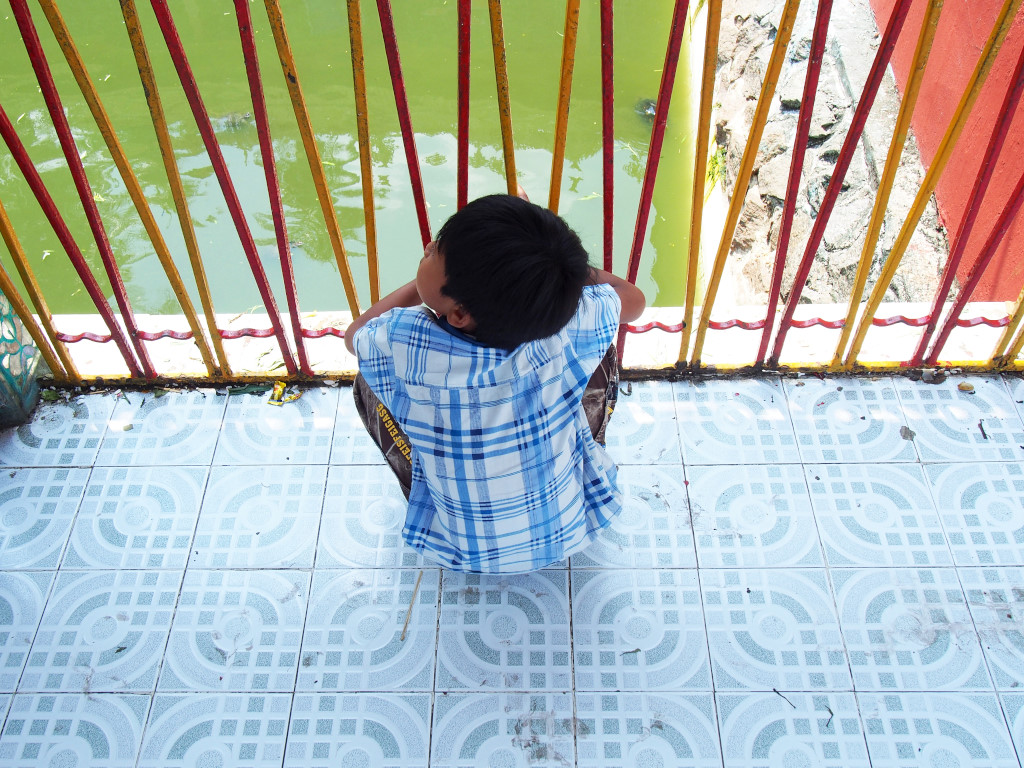
As with other temples, atmospheric monastic housing embraces the grounds of the temple, the interleaving road lined with small shops selling offerings and food to visitors, and running towards the waterfront, where a set of two-floored river boats lie moored at the decaying piers, waiting for visiting tourists to spend generously on prospective river cruises. The few local visitors daring to venture into the scorching heat succumb quickly, and are relegated to lying prostrate in the meager shade of the jetties.
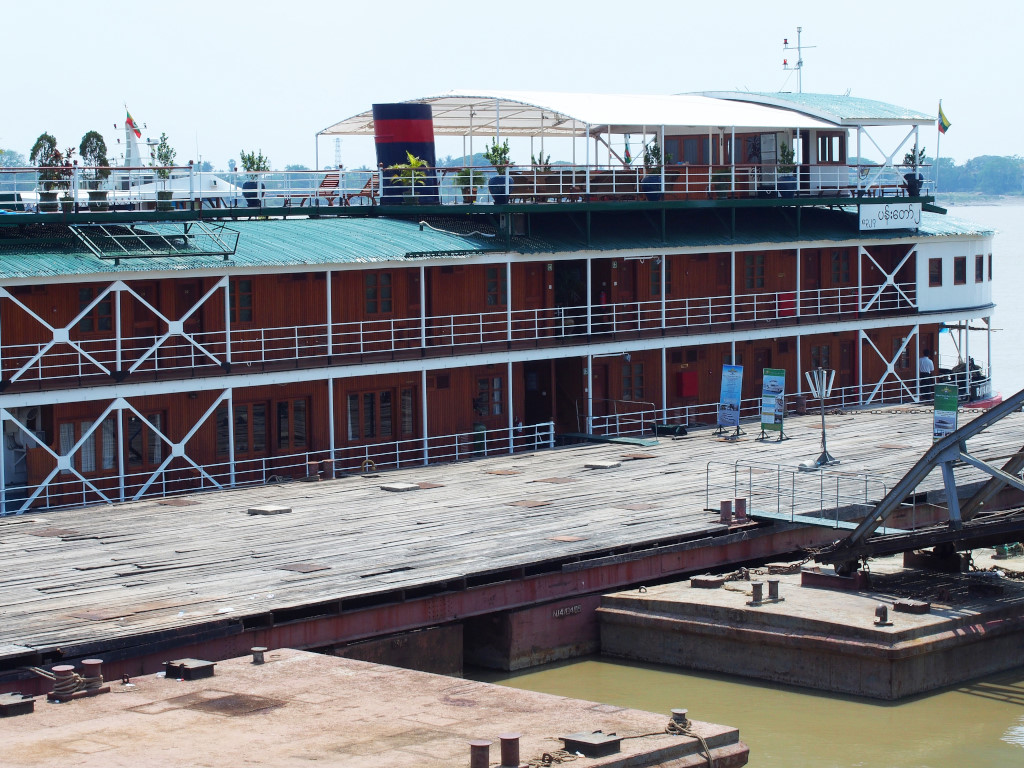
Back along Strand Road towards Sule Paya road, the showcase of Raj-era architecture is visible from the riverside, although obstructed by the now perennial thick torrent of slowly moving traffic running along Strand.
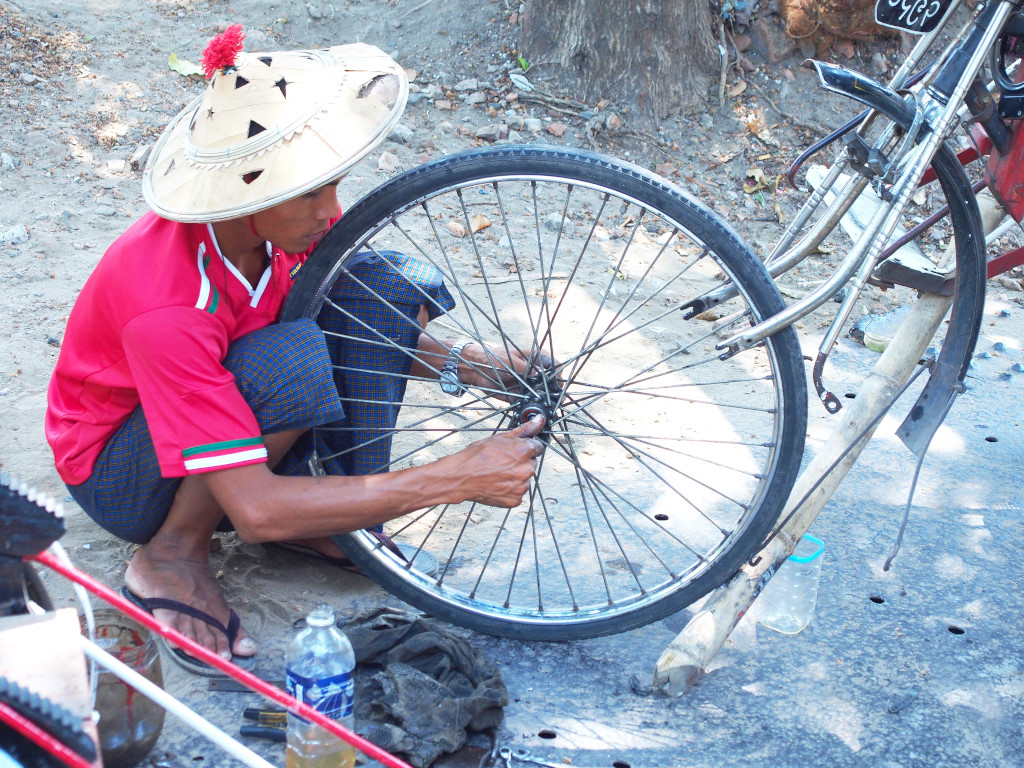
The Botataung Goods Shed is one of many relics of the British era, although now having declined into a state of substantial decay. The tired warden downstairs at the New Light of Myanmar refuses me entry to the offices, although nowadays the erstwhile notorious English-language junta propaganda rag plies a far more docile dictum.
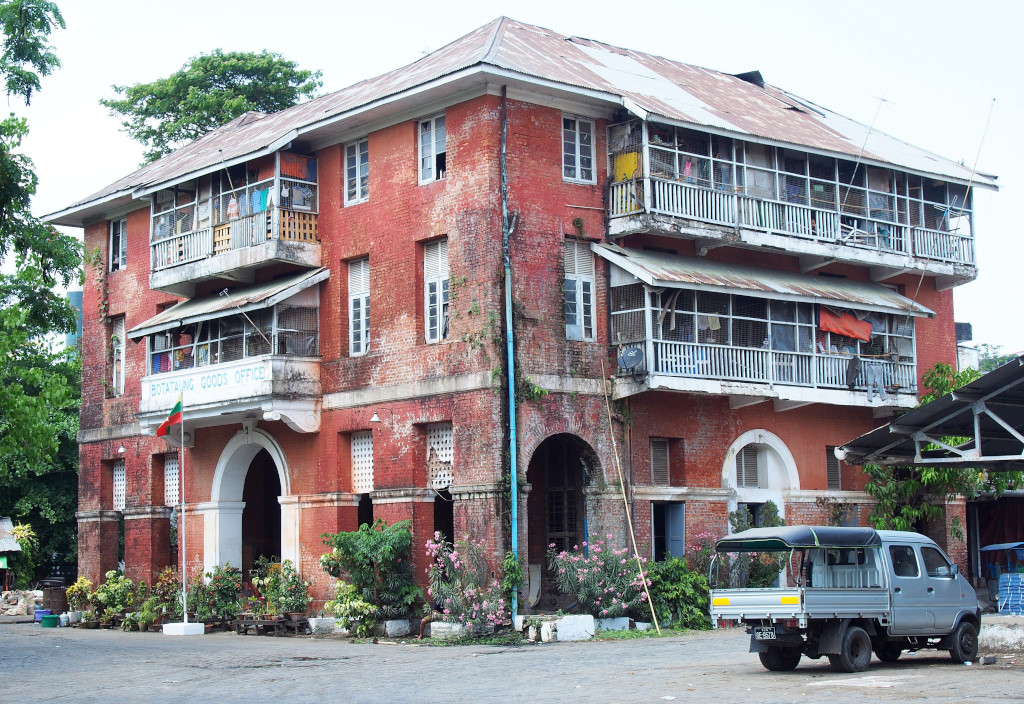
The trishaw riders have little chance of coping with the traffic or competing with the copious amounts of taxis, especially those who sense little remorse at driving right into unwitting pedestrians, which one made the mistake of doing to me, resulting in a fairly vitriolic tirade on my part.
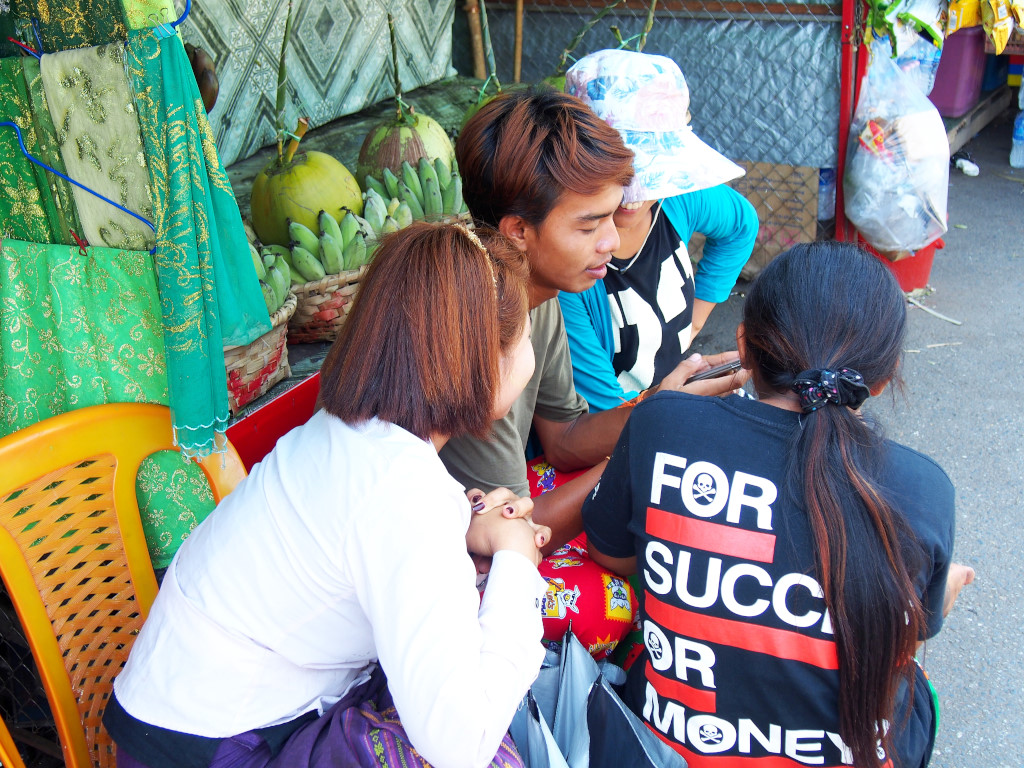
Next to the fading atmospheric British embassy lies the storied Strand Hotel, the matriarch of Southeast Asia’s grand hotels, the modest rattan furniture and potted palms set alongside the burnished teak and soaring pastel yellow walls, the large fans lazily turning overhead doing little to assuage the guests of the intense heat. The hotel is elegant, simple and intimate, a bar occupying the corner of the building looking out over the side street, the interior finish as impeccable as the outside is weatherworn.
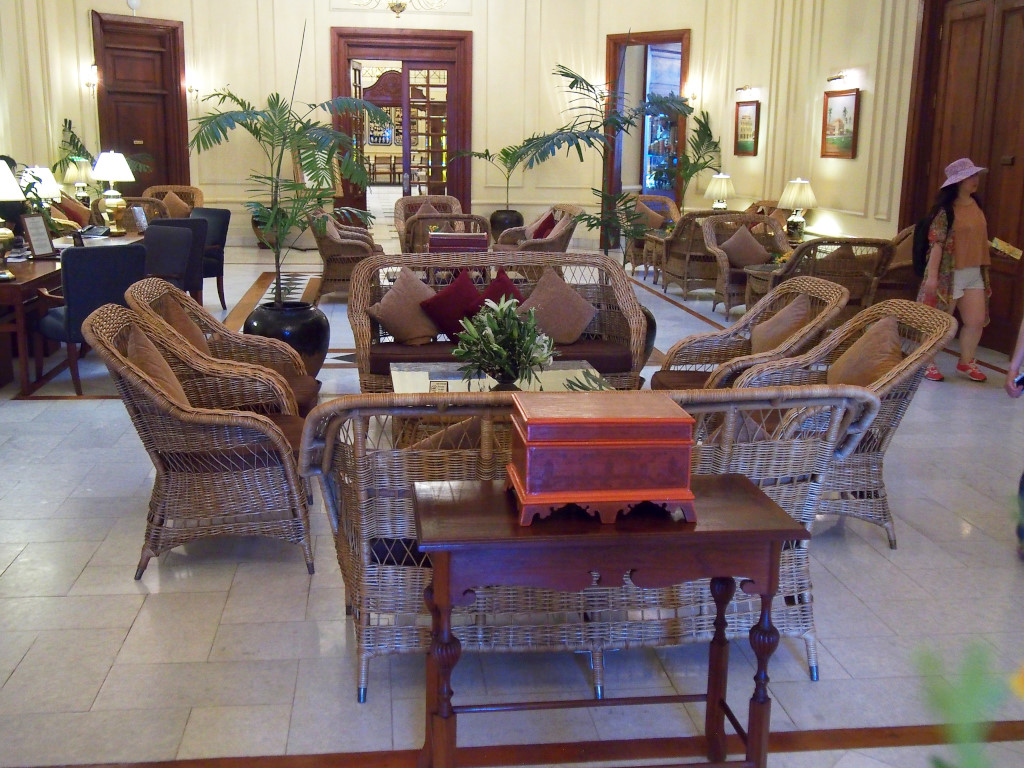
On the far-side from the restaurant lined in gold on black lacquer plates is a set of small shops selling substantially overpriced souvenirs, crowded amidst the narrow stone and teak-encased walls. Roman arched windows interleave with neo-classical colonnades, windows crowned with heavy decorative lintels and pediments, some buildings crowned with Hindu-styled floating rooftop pavilions.
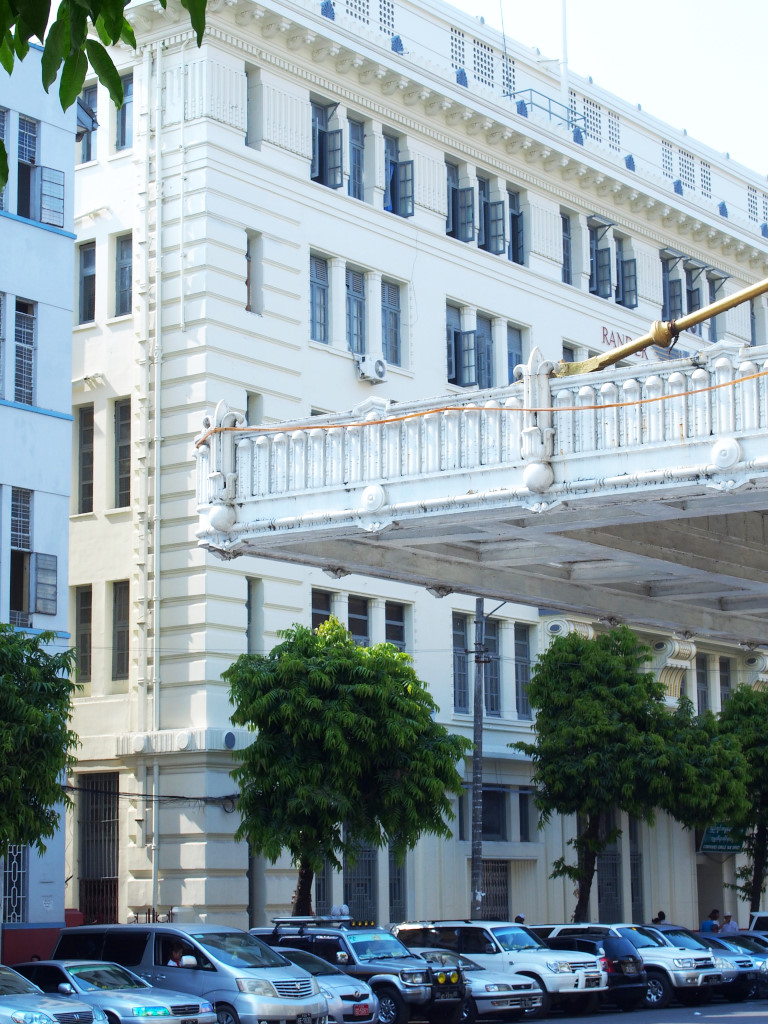
Despite the relatively broad road, the street is crowded with densely parked cars, against which are layered the straggling vendors and foot traffic. Sule Paya Road is lined with architectural gems, many of which are in desperate need of repair, workers visible on the upper floors of some buildings laboriously working at restoration work in some, although the majority of the stately Raj-era buildings seem to be on their last legs.
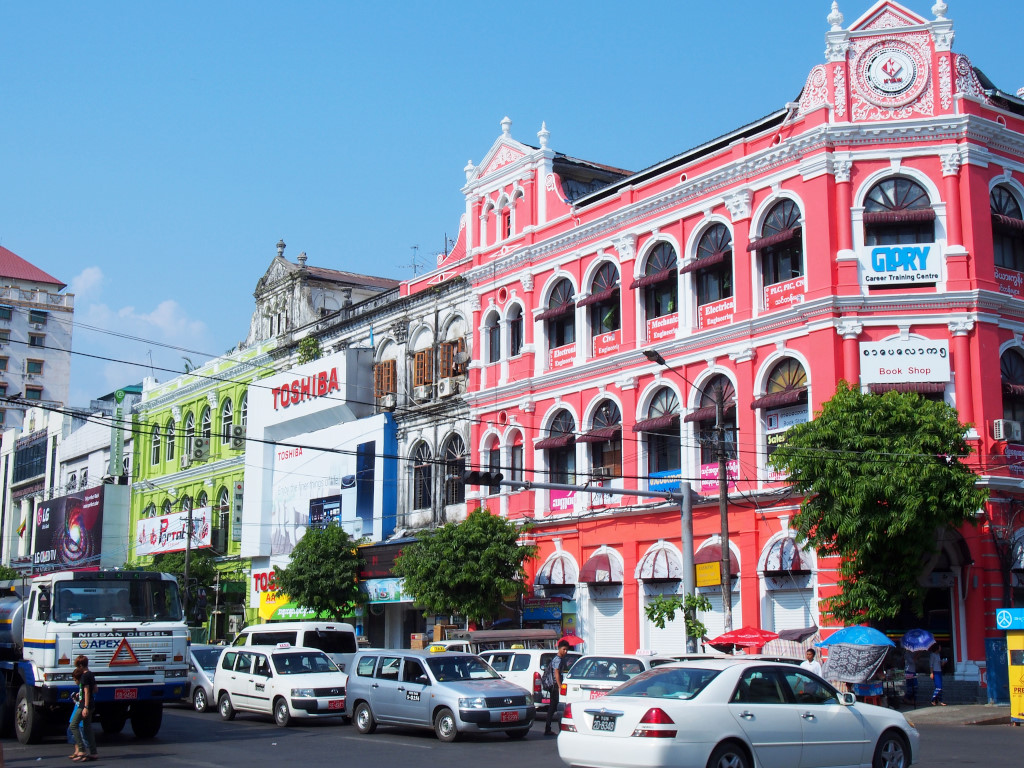
The typical Victoria-era neo-Saracenic style the British employed in India is also visible in Rangoon, although many edifices adhere more closely to Victorian-era building styles or for that matter incorporate their own local quirks. The booksellers on the street don’t shirk from boasting their images of Aung San and his daughter in the face of the centre of governmental power, although the Burmese national government is now far-removed from the tumult of Yangon. Yangon is a gorgeous and diverse city, and the rich tapestry of colonial-era architecture in the area of Sule Paya is an essential component.
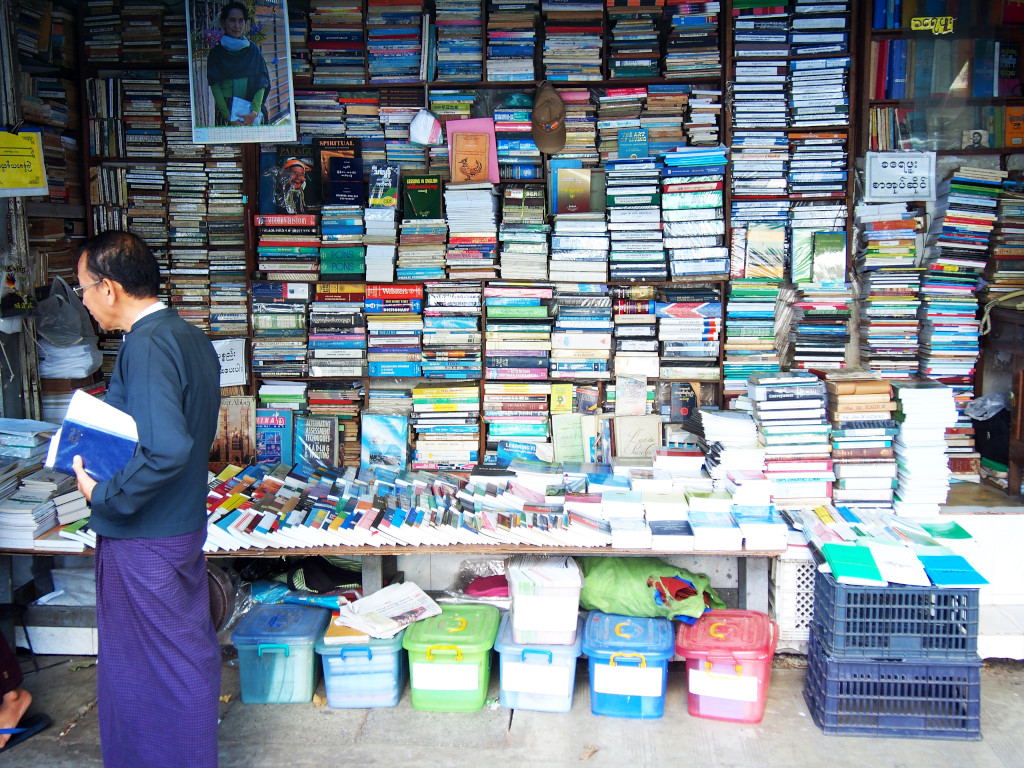
Maha Bandoola park lies in the heart of central Yangon, south of the City Hall, and southeast of Sule Paya as well as other stately historic buildings. The grassy space situated proves to be an ideal ground for the relaxation of locals, many of whom are engrossed young couples, although nowhere nearly as dominant a demographic as the Peoples’ Park we visited yesterday.

Many locals are perplexed as to why I would want to take their picture, although almost always smilingly comply, largely because they were smiling to begin with – but such is the plight of much of the youth in the developing countries, rife with seemingly inexplicable joyfulness despite the ostensible hopelessness of their lives.
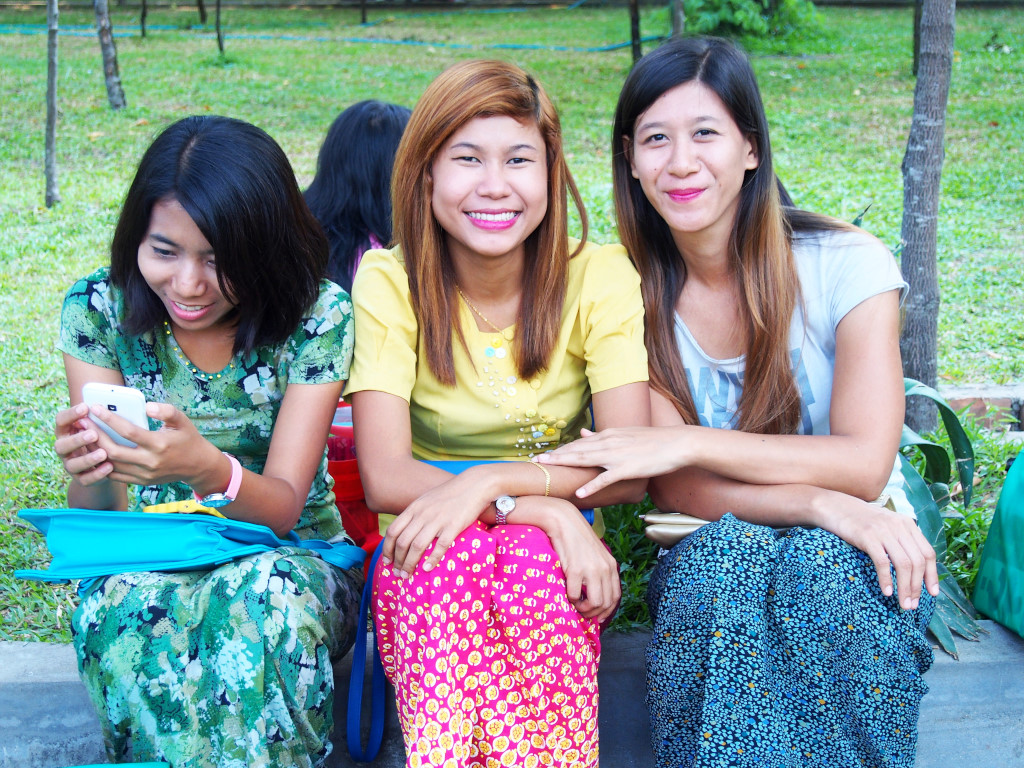
Wandering through the tumult around the City Hall, I reach the tourist office, the rudimentary setting belying the expert knowledge of traveling the country the workers inside are privy to. The woman explains the various ways in which I could reach Sittwe on land, recommending away from the route over Thande, which is a horrible road, and recommending instead traveling over Mt. Victoria in Chin state.
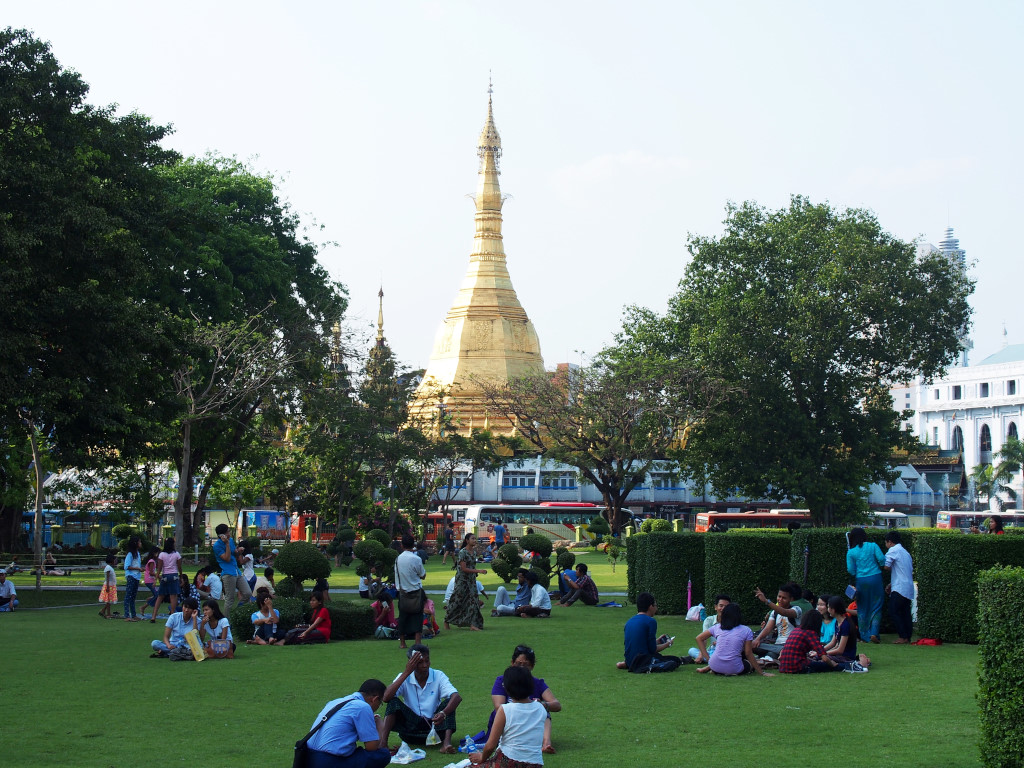
She confirms that the accommodation at Ngapali Beach is inexplicably expensive, but recommends staying in the village areas away from the beach, where there are far less costly options. Locally, the 43 bus will take me to Shwe Dagon and beyond to Kan Daw Gyi lake, and the same bus possibly also to Inya Lake. Collective taxis run from Sule Paya road to the bus station for 1,000 kyat per passengers. And finally, the buses to Naungshwe all run around 3 pm in the afternoon, arriving in the Inle Lake are in the morning.
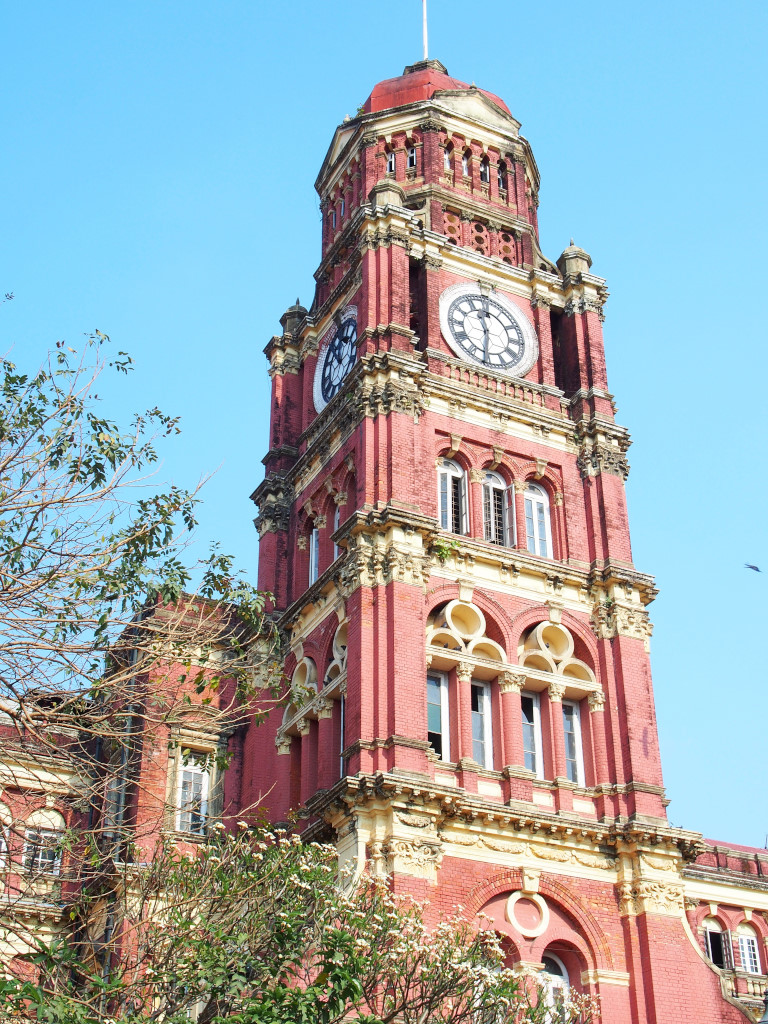
Following a coffee at the KSS Singaporean-style cafe up the street from Myanmar tourism and behind the City Hall, I decide to not continue to Kan Daw Gyi lake due to the late time of day. And the centre of Yangon offers such a compelling, vibrant theatre of different ethnicities and lifestyles colliding in wild cacophony of expression in a confined space, against a backdrop of drab residential towers mixed in with the faded colonial palaces. The continuous stream of retail is fronted by a thick cordon of roadside vendors selling all manner of goods, some of the poor folk having suffered the indignity of my photographic instincts on my earlier round through the city.

In anticipation of Thingyan, the water festival, many young men have dyed their already lavishly coiffed hair a rainbow of colours. The crumbling remains of a massive colonial-era palace occupy a block further to the east, the multi-storied red brick structure opulent in detail, its towers looming ostentatiously over the disheveled green space below, a structure when restored could compete with the likes of the C.S.T. station in Mumbai. At present this structure looks abandoned to a less auspicious fate, but is another gem in this fascinating town.
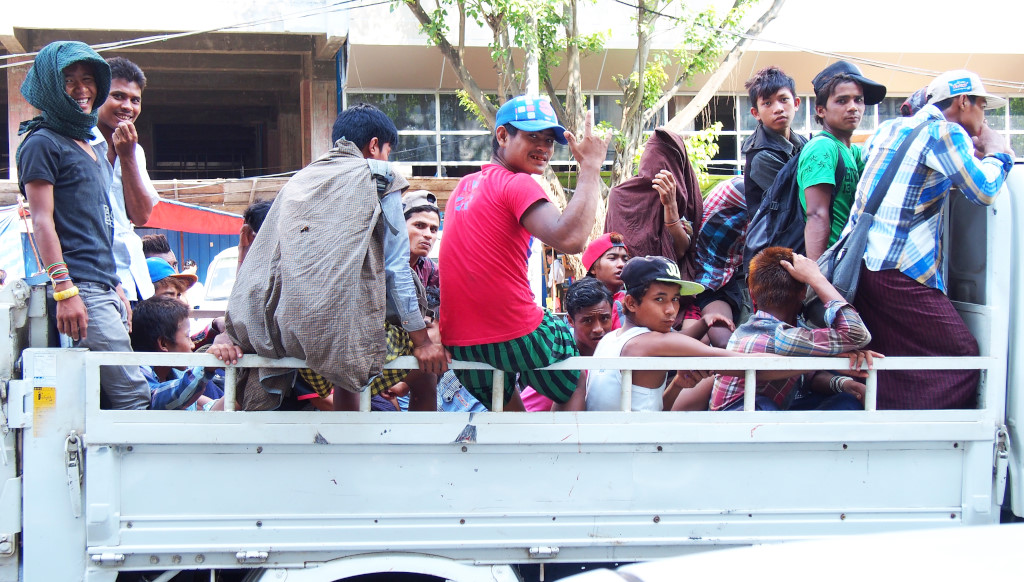
Across the elegantly lettered Myanmar Times office stand the soaring spires of St. Mary’s, the impeccably maintained Catholic temple contrasting heavily with the surrounding weatherworn secular architecture. Consistent with colonial churches, St. Mary’s represents a pale counterpart of its ancient continental brethren, although in the colonies the tall spires, enormous windows, and sea of stained glass sainthood inside don’t fail to impress.
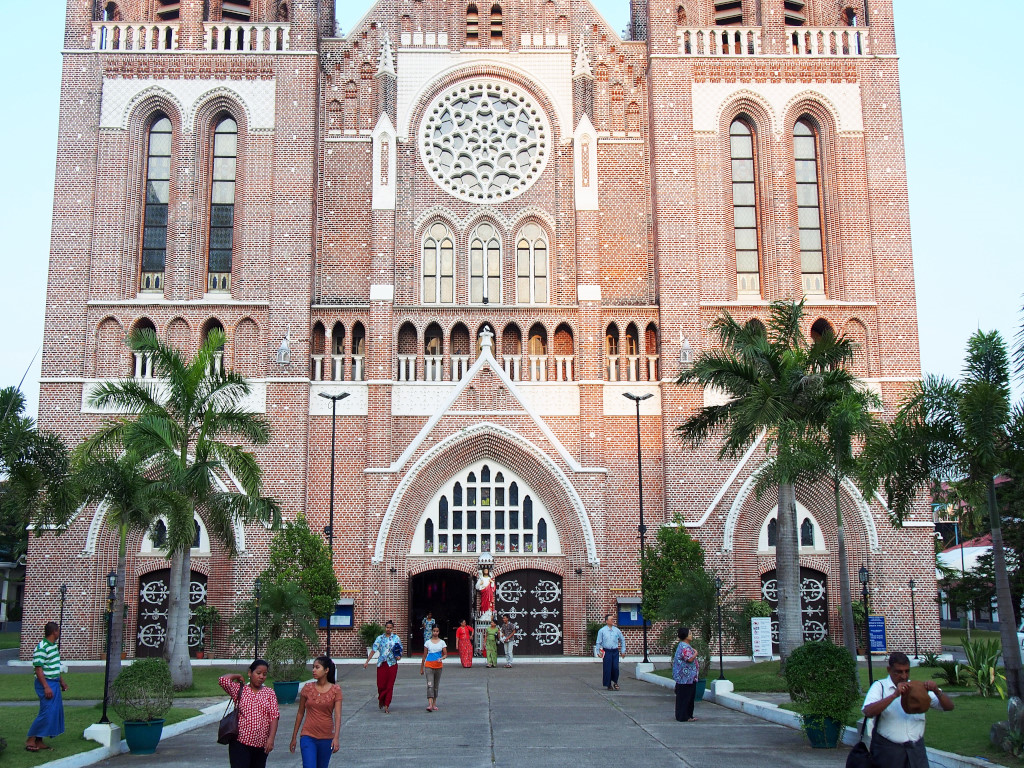
I encounter a young bearded Canadian from Vancouver on the road next to St. Mary’s who is curious as to what the church may be concealing. Unfortunately the church is closed, so we can’t do much to investigate. David had taken numerous trips through Asia, in particular, Indonesia, a country he had spent several months motorcycling through and fallen in love with. It certainly would seem that other travelers are vastly more efficient with their time than I am! He also concurs that Thailand is a deeply disappointing country, overdeveloped and soulless.
On the subject of what brings so many Catholics to Yangon, the young thanaka-chalked woman we meet next to the church lot has little idea, even if she mastered enough English, but a man accompanying a young boy conveys that centuries ago, missionaries had dispersed throughout the country, Italians, French and Portuguese, each nationality focused on a particular province of the country, hence the Catholic legacy.
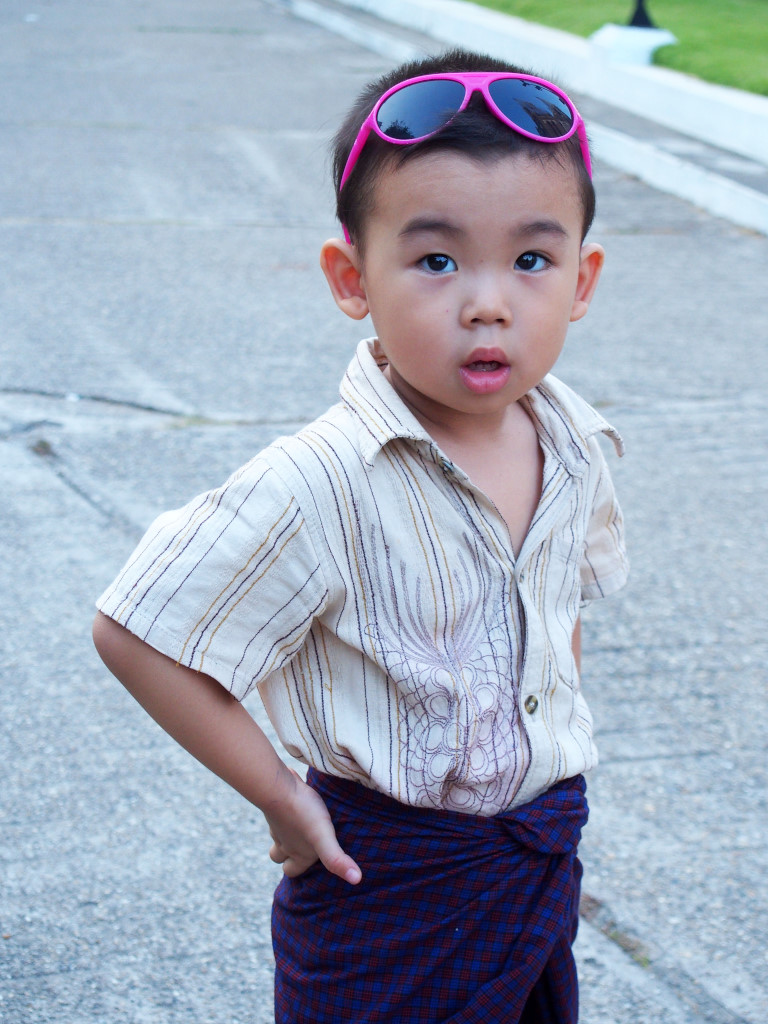
David may have a master’s degree in Political Science, but his knowledge of history is largely informally acquired, and judging by his explanation of Burmese history, rich and deep. He tells us about having spent almost a week in the Dawei peninsula, having rented a motorbike and explored the more remote beaches of the area. He stumbled upon a fund-raising festival being held in the middle of nowhere in the peninsula for a library featuring local folkloric artists. Above all, he loves the people in Myanmar.
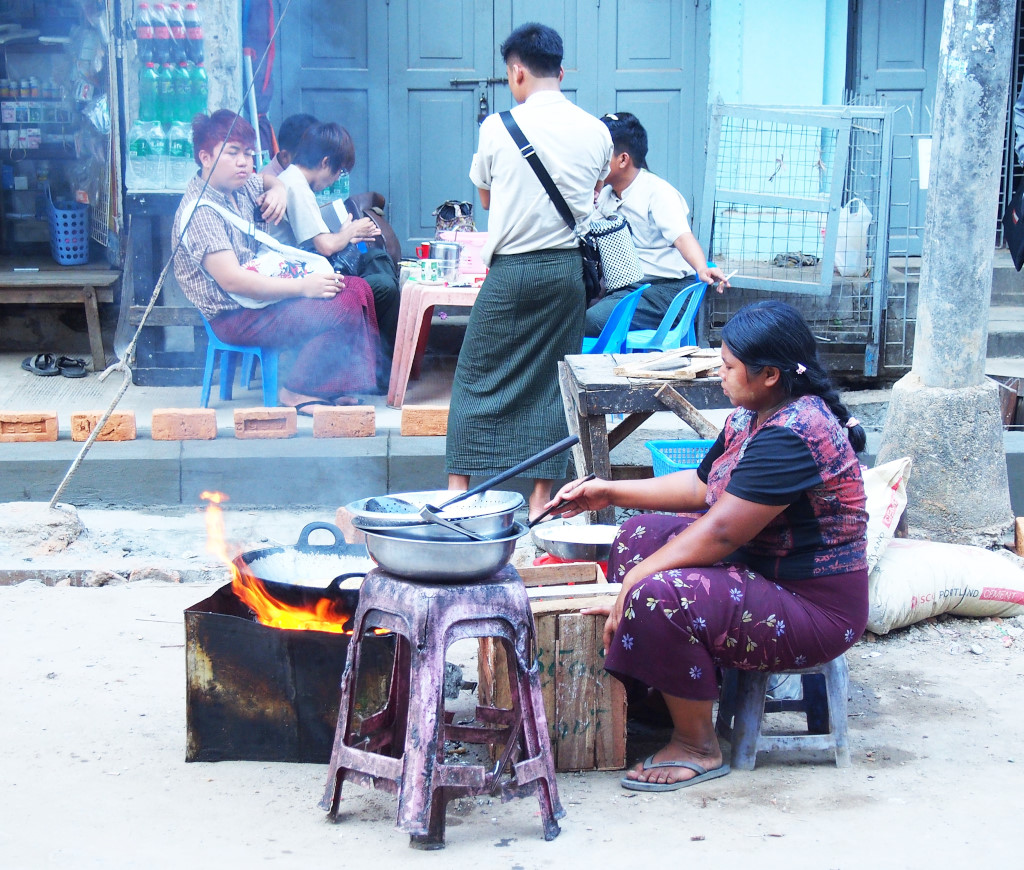
The biggest single event in the country’s modern history may be the expulsion of the Indians, who had been arriving in massive numbers, some 400,000 each year. The fact that there are only two million now gives an idea as to how many were turned away from the country. But as much as Indians and Muslims had been disliked in Myanmar, the relentless personally aggrandizing commercial nature of the Chinese makes them equally unpopular.
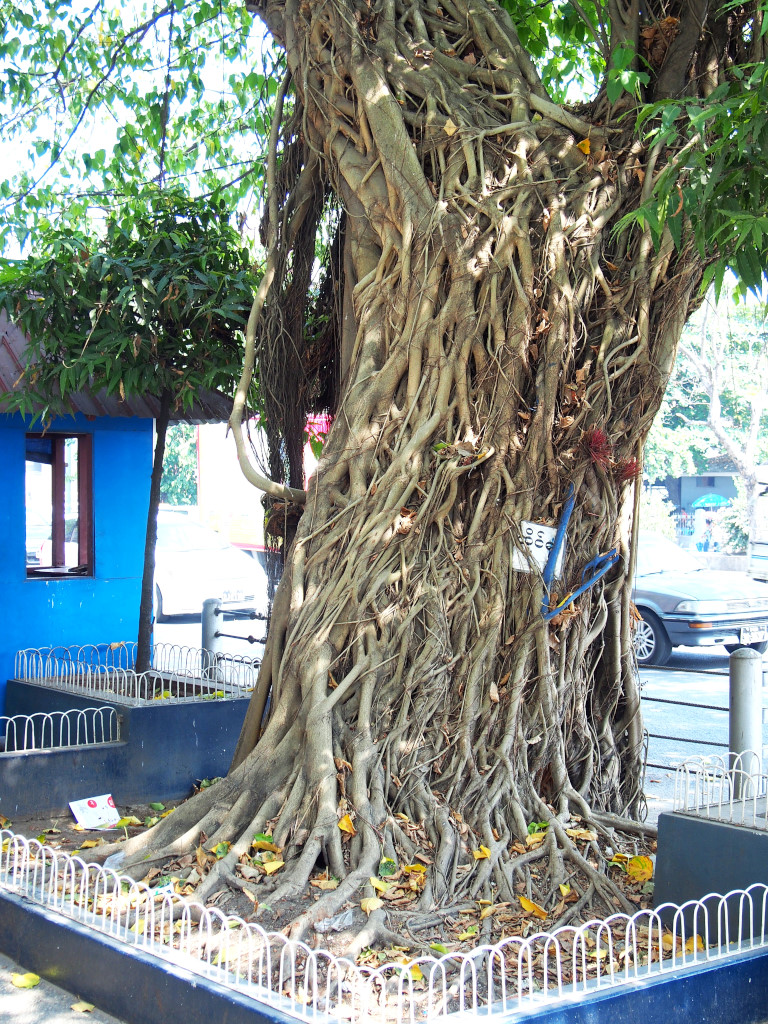
Having met such a worldly traveler, it only makes sense we end the evening at a run-down Indian establishment. We order a series of Indian plates, he a mutton curry and I a chicken curry and masala dosa. I am surprised by the quality of the plates that have been provided, the small amounts of accompanying sauces highly authentic in nature, and for lower prices than Nilar’s, although admittedly in a far less glamorous setting.
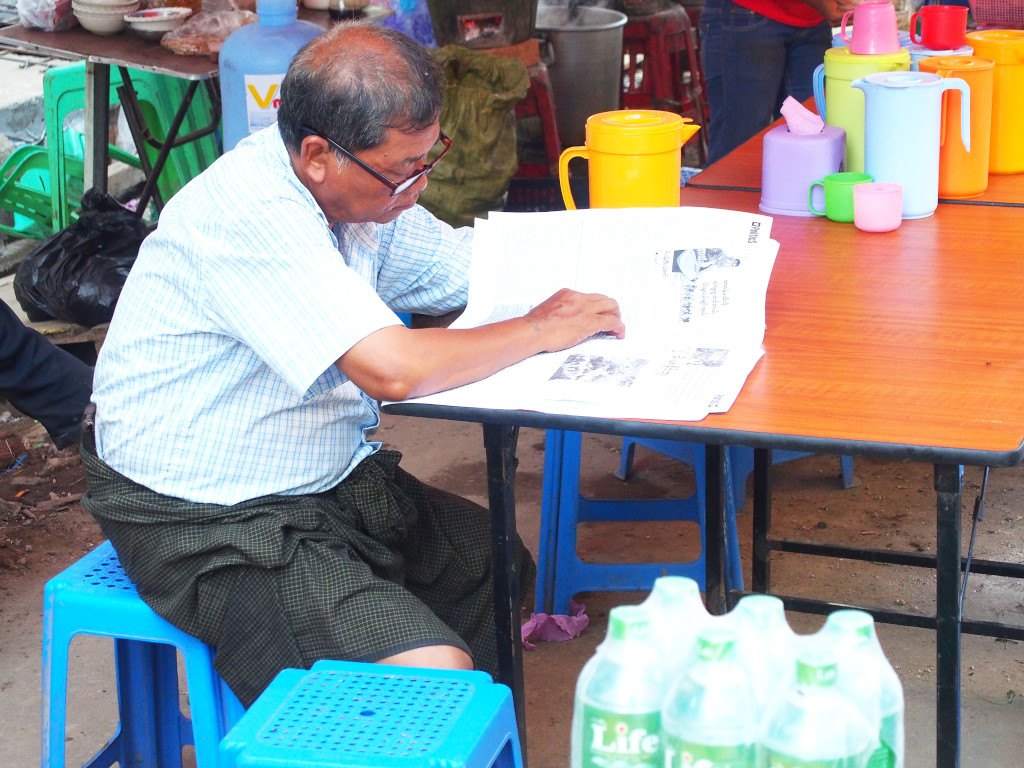
Dave earns his keep managing a fire station in rural Alberta, directing fire fighting air traffic towards impacted areas. He loads both wheeled and pontoon planes with a mixture of water and foaming agents that are pumped into the water and used to create a fire retardant belt around the affected areas. The work is a great match for his lifestyle, but he also recognizes that he won’t be able to keep this work going for the rest of his life.

I can’t help but ask him what his background is, given his degree of education and how articulate he is: not surprisingly, his parents are lawyers and his grandfather none other than Dave Stupic, the right-hand of the firebrand Dave Barrett, an earlier icon of British Columbia’s left.
Much of the destruction we see here was from the Cyclone Nargis that hit Myanmar in 2008, the storm striking a decisive blow to buildings that had experienced substantial neglect over the years.
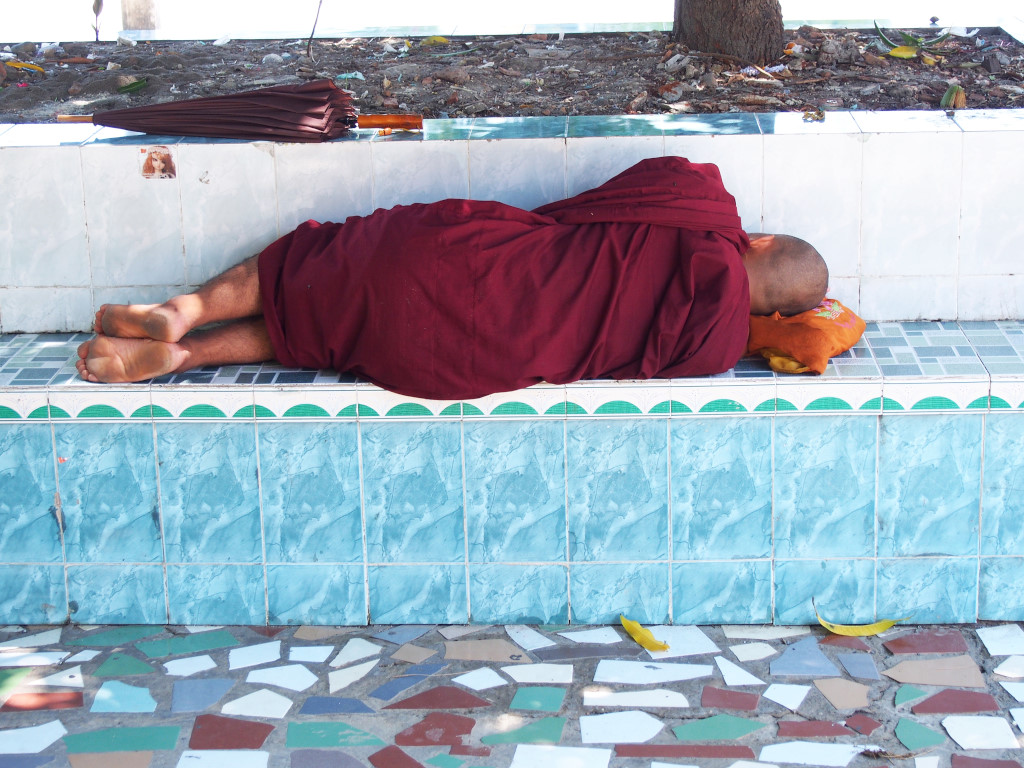
David explains that the Burmese at one time had the most powerful military in southeast Asia, and could easily have taken on the English if the latter hadn’t demonstrated superior military technology. The Burmese had become a dominant force in the entire region, conquering neighboring countries, and with crack Portuguese mercenary troops were unbeatable. They ran into conflict with the English while fighting for the same areas of eastern Bengal as the English.
The English successfully tried neutralizing the Burmese on their opposing eastern flank, the first war having barely been won leading to a second one in which the English vanquished the Burmese much more easily with their then superior firepower.
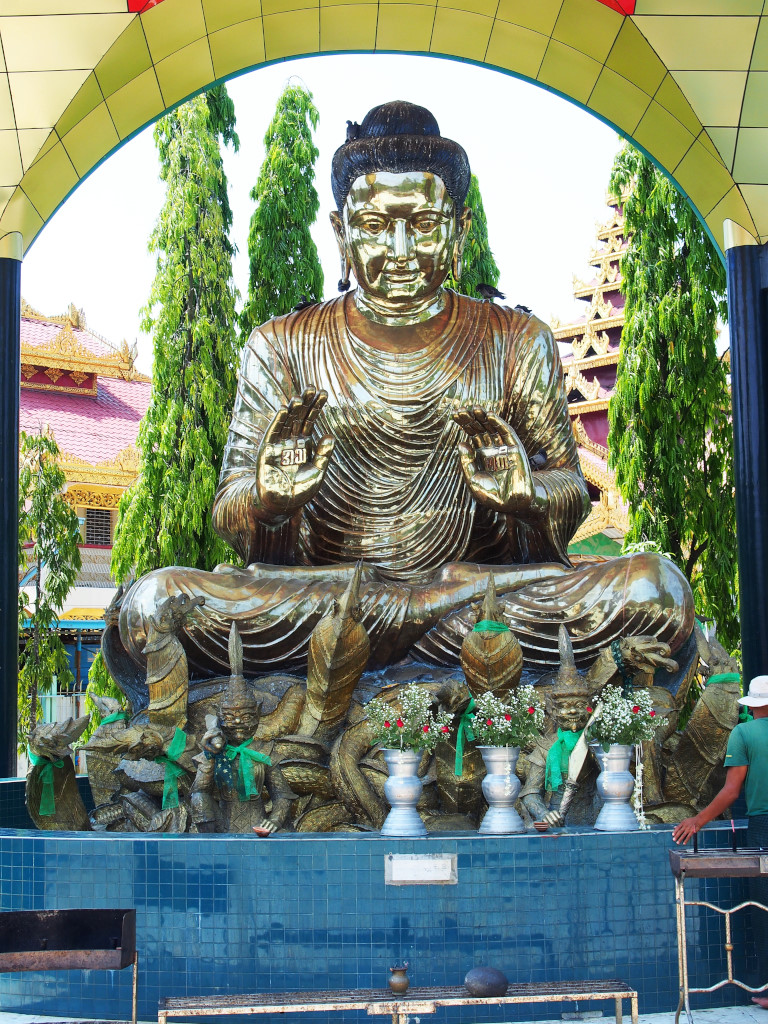
David continues that he studied in Sweden. While he enjoyed his time in Uppsala and learned to appreciate the unique characteristics of the country’s combination of industriousness and social contract, he senses the population has become too entrenched in its sense of entitlement with a concomitant eroding sense of ambition, something the Norwegians would have to worry less about, given the vast amount of wealth they have accumulated from their oil resources.
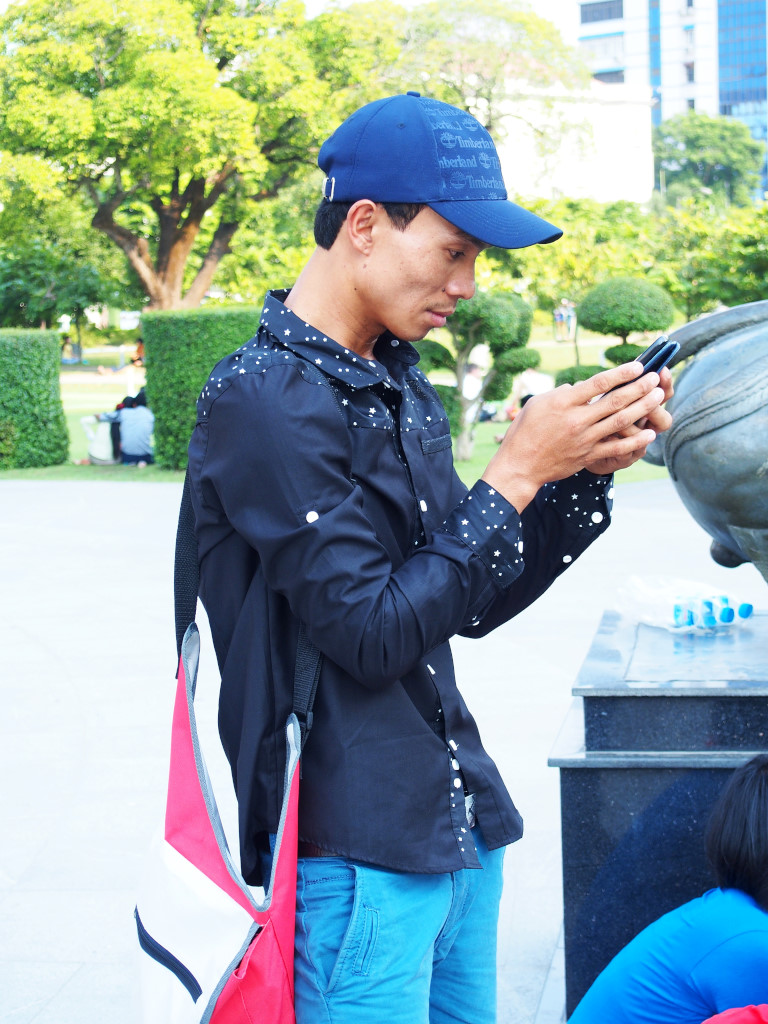
One of the great thrills of traveling is meeting interesting people, and this trip has been no let-down on that level. David is one of the most interesting and engaging free spirits I have met from my home country in a long time, and I wish him the best of luck in maintaining a steady course into his future, allowing him to continue with work that allows him to thrive and at the same time enjoy the freedom to soar in his free time.

